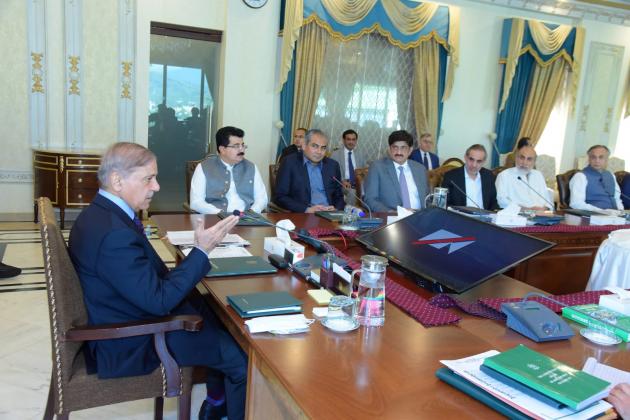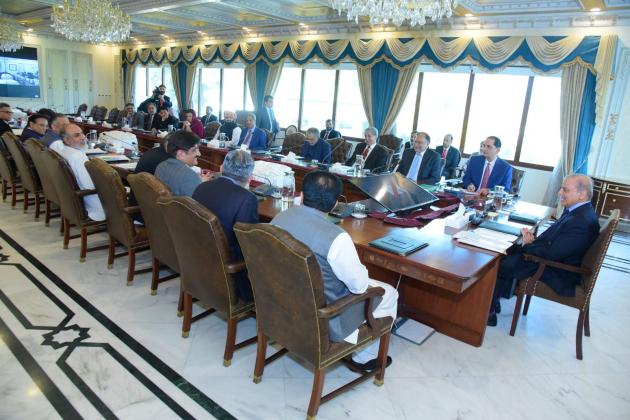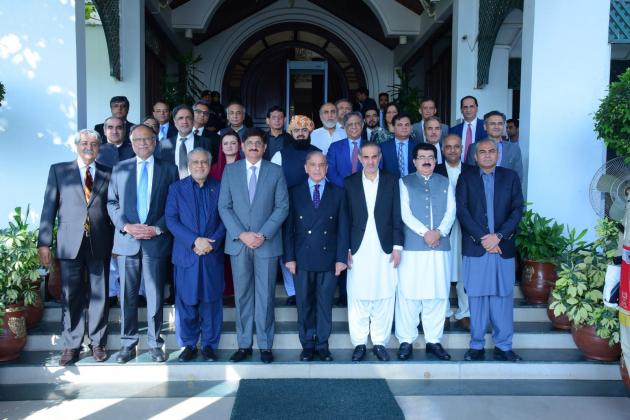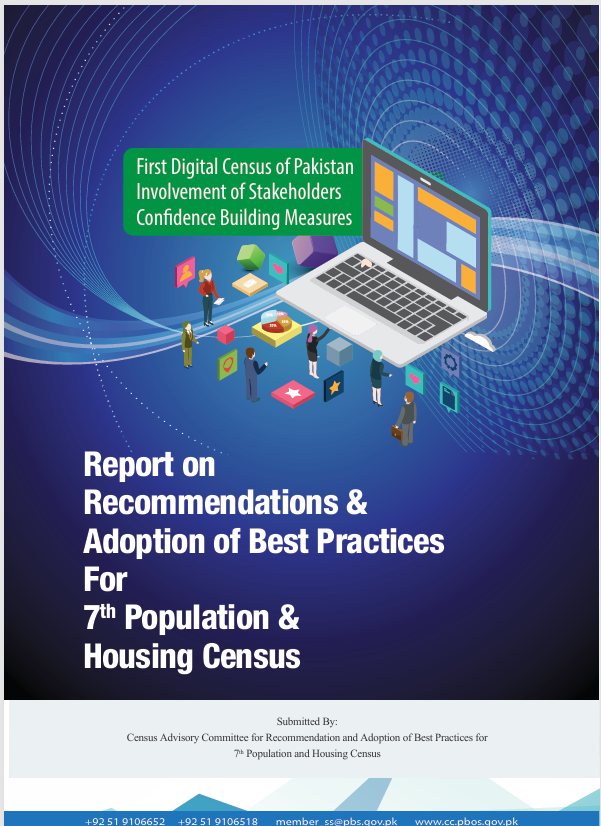Census Story
Census Advisory Committee
Census Monitoring Committee
Field Activities
Self-Enumeration
Salient Features
Announcements of Census Results
Publicity Campaign
Census Story
Census Story
Introduction
The Population and Housing Census is a head count of people (and structures) living within geographical boundaries of a designated area with reference to a particular period and time, whether they are nationals or foreigners, legal or illegal. These numbers are needed for
1- Resources’ allocation,
2- Sampling-frames,
3- Delimitations of election consistencies,
4- Allocation of number of seats in National Assembly
5- For policy & planning of future.
The link between the census and resources’ allocation and allocation of number of seats in Assembly made the census results very sensitive and of very high importance. Due to this sensitivity, every sector of the society critically reviews and closely watches the trends of population growth, so that their interest / benefits can be properly recognized.
Background of Census
The Population and Housing Census is crucial National exercise linked with provision of data for key policy making matters regarding development programs, political representation and resource allocation which has far reaching impact.
A national census is mandated by the Constitution of Pakistan to be held every ten years. After the independence of Pakistan in 1947, the first census took place in 1951 under Finance Minister Sir Malik Ghulam, serving under Prime Minister Liaquat Ali Khan. Since 1951, there have been only 7 nationwide censuses (1951, 1961, 1972, 1981, 1998, 2017 and 2023).
7TH POPULATION AND HOUSING CENSUS- THE DIGITAL CENSUS
Background
45th meeting of Council of Common Interest (CCI)
The Pakistan Bureau of Statistics is proud to announce the successful completion of 7th Housing & Population Census, the 1st digital census in Pakistan. The process started from 45th meeting of Council of Common Interest (CCI) in which results of 6th Census were approved along with the directions to conduct 7th census as early as possible while using the latest technology and best international practices. On 13th January, 2022, CCI approved a challenging work plan in which Pakistan Bureau of Statistics was tasked to complete a program which comprised of many discrete tasks, each of which was in itself a project with defined ends and processes. Countries of similar size transformed their censuses from manual data collection to digital after many pilots, feedback, and reversion to drawing board, but PBS was not accorded with this luxury.Milestones of Census Journey
-
Digital Census
-
Political Constraints
-
Field Work
-
International Standards for Industrial Classification (ISIC)
-
Decision-making
-
Census Project Management Unit (CPMU)
-
Information based on GIS
Census Advisory Committee
Census Advisory Committee
45th Meeting of Council of Common Interest (CCI)
The 45th meeting of Council of common interest (CCI) was held on 12th April, 2021 under the chair of the Prime Minister. The CCI decided to approve the final results of the 6th Population and Housing Census 2017 and directed that “Process of the next Census should start as early as possible according to International best practices by using latest technology.”
Constitution of Committee for Recommendations & Adoption of Best Practices for Upcoming Population Census
The Sixth Population & Housing Census 2017 was conducted w.e.f. 15th March to 25th May 2017 and provisional results were released in August 2017 with the approval of CCI. The same results were used for the delimitations for General Elections 2018. However, the final results were not released due to reservations raised by certain stakeholders on census methodology and field operation mechanism. It is pertinent to mention here that Cabinet in its meeting held on 11th February 2020 constituted five members’ committee to deliberate and make recommendations for approval of final results of Census 2017. The committee after detail deliberations submitted it recommendations to cabinet. The cabinet in its meeting held on 22nd December 2020 has approved to forward the recommendations of the cabinet committee to CCI for final decision. CCI in its meeting held on 12th April 2021 has approved the committee recommendations regarding approval of Census 2017 results in larger national context and conducting next census at earliest with adoption of modern technologies.
Keeping in view the issues faced during census process (preparation stage to final results) regarding Census methodology, Field Operation strategy, the questionnaire, mode of data collection etc. strong need is felt for deliberations to overcome such problems before conduct of next census. Further it is pertinent to mention here that last census was conducted manually through paper-based questionnaire, however, modern-day censuses are being conducted electronically, therefore, it is essential to discuss the shifting from manual to electronic data collection. Therefore, Ministry of Planning Development & Special Initiatives constituted the Committee for Recommendation & Adoption of best practices for upcoming population Census under the Chairmanship, Deputy Chairman Planning Commission with the mandate to review the census process, data collection and field operation methodologies used for Census-2017 & recommend the modern methodologies being adopted for census in region & globe for conduct of upcoming census. The committee is composed of Six (6) members including Chairman, members from relevant organizations and two renowned demographers.
Terms of reference
- To review the census process, data collection and field operation methodologies used for Census 2017 & recommend the modern methodologies being adopted for censuses in region & globe for conduct of upcoming census
- To compare the regional/globally adopted census questionnaires and proposals for improvement
- To review mode of Data Collection (Manual /Electronic) for provision of timely & credible results & recommendation for adoption of innovative tools & technologies for geo referred enumeration up to the household level for upcoming census
- To review the best practices of field operations including monitoring/supervision & data processing to minimize the omissions/ errors and complete coverage
- To devise strategy for confidence building measures of all stakeholders for smooth completion of census operations and for increasing reliability & credibility of census results
Census Advisory Committee Meetings
In compliance of decisions of 45th meeting of CCI, owing to the Importance of Census and its long term ramifications due to its linkage with Political Representation & Resource Allocation, and in order to bring credibility & transparency to the whole Census & to adopt best International Practices Government of Pakistan constituted Census advisory committee (CAC) of renowned demographer and experts from all over country with comprehensive TORs. The committee was mandated to device recommendations for conduct of next census digitally using best international practices while reviewing the issues faced during census 2017. The CAC after detailed study of international best practices and UN principles, recommended to conduct the 7th Population & Housing Census, “Digitally” linked with Geographic Information System (GIS) for real time monitoring, transparency, data quality & complete coverage to bring credibility and wider acceptability to the whole process.
Major Recommendations of CAC
- Census must be conducted Digitally by Self-Enumeration and Tablet Based Data Collection while Geo Tagging all structures
- De-jure Method of enumeration is recommended
- Law enforcement agencies for security only not for enumeration
- National Census Coordination Center (N3C) for monitoring, coordination and decisions
- Involvement of Stakeholders (especially provinces / political parties)
- Pilot Census to test the processes / tools techniques for conduct of “Digital Census”
- Extensive trainings using Modern technologies
- Conduct of Post Enumeration Survey for assessing the coverage
Questionnaire Committee
In the light of the decisions of 7th Meeting of the Committee constituted for recommendation and adoption of best practices for upcoming Census held on 15th July, 2021, a committee was constituted for finalization of Census Questionnaire for 7th population & Housing Census, the first ever “Digital Census” of Pakistan.
Terms of Reference
- The committee will finalize the questionnaire in the light of the recommendations of the committee constituted for recommendations and adoption of best practices for upcoming census at earliest possible time.
- The recommended questionnaire will be then shared with Provinces for their feedback to finalized the final questionnaire.
Notification of Questionnaire Committee
BRIEF PROFILE OF COMMITTEE MEMBERS
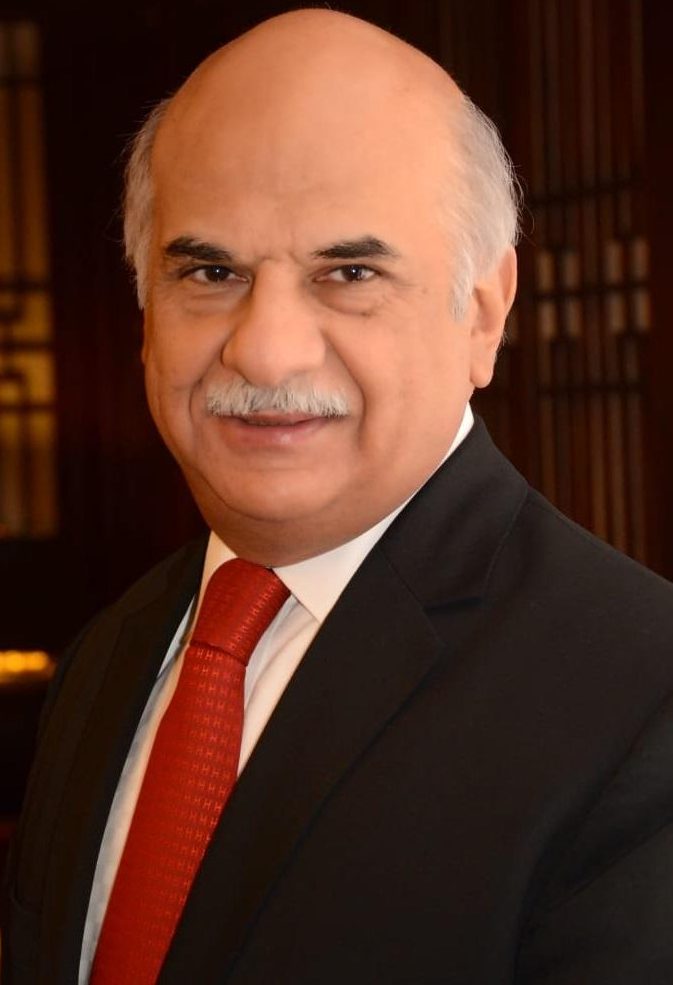
Muhammad Jehanzeb Khan
Deputy Chairman Planning Commission,
Islamabad (Chairman)
Mr. Muhammad Jehanzeb Khan is a serving Government Officer, presently he is serving as Deputy Chairman Planning Commission. Previously, he has held dual charge of Chairman Planning & Development and Additional Chief Secretary – Energy, Government of Punjab. He did his MBBS from University of Peshawar and MBA (Public Service) University of Birmingham, UK. He held various positions in Government and has 24 years diversified professional experience. His professional expertise include Public sector Financial Management.
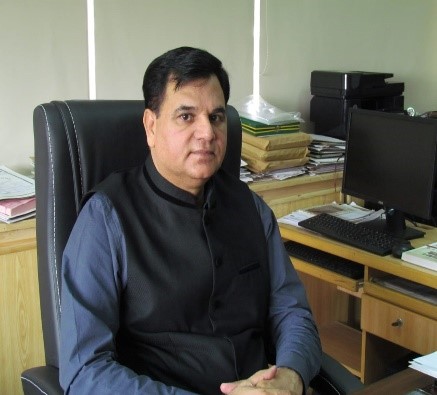
Muhammad Sarwar Gondal
Member Support Services / RM, PBS
Member / Secretary Committee
Mr Muhammad Sarwar Gondal working as Member (Support Services/ RM) in PBS since July 2017. He initiated “Digital Transformation” of PBS and not only shifted data collection electronically through tablets linked with GIS for real time monitoring but also designed customized dashboards with info graphics & time series data for effective data dissemination for informed decision making. He has played key role for provision of heat maps with relevant data for successful implementation of the “Smart Lock Down strategy of Pakistan.
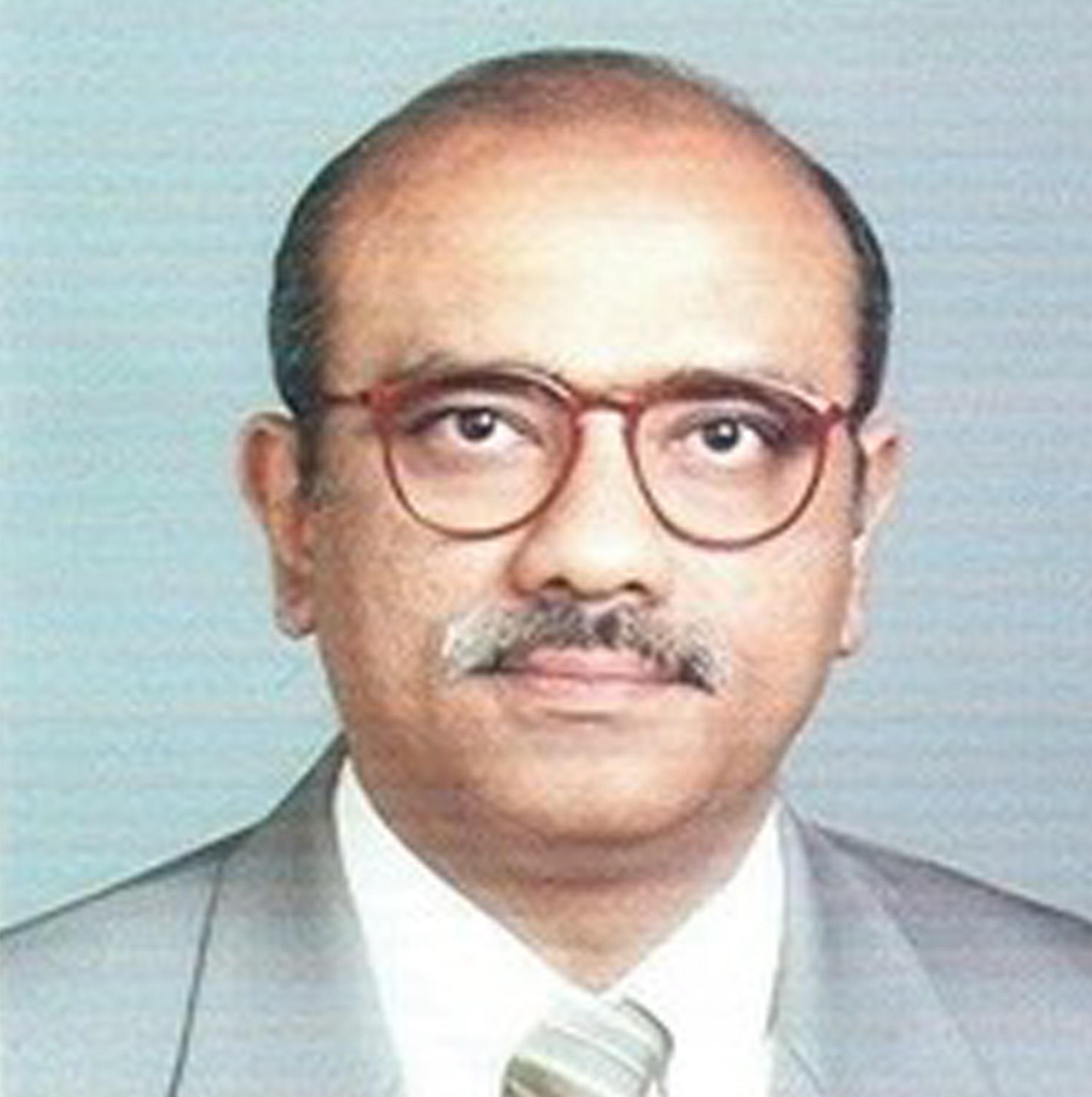
Dr Mohammad Ahmed Zubair
Chief Economist, Planning Commission,
Member
Dr Mohammad Ahmed Zubair joined as the Chief Economist and Member (Economic Policy) in the Planning Commission, Government of Pakistan in December 2020. In August 2020, Dr Mohammad Ahmed Zubair retired as Regional Lead Economist in the Islamic Development Bank, headquartered in Jeddah, where he had served for twenty-two years.
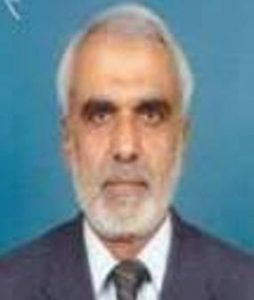
Dr G. M. Arif
Independent Researcher
Member
Renowned Demographer / Researcher, Ex. Joint Director of Pakistan Institute of Development Economics (PIDE). He was member of the Technical Committee of Governing Council for census 2017. At present he is also Member of the Governing Council of Pakistan Bureau of Statistics, Islamabad.
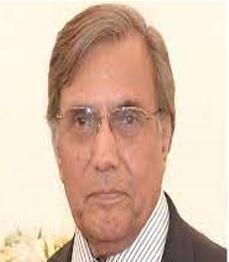
Dr. Muhammad Nizamuddin
Independent Researcher
Member
Renowned Demographer, Ex-Vice Chancellor of University of Gujrat, and Chairperson of Punjab Higher Education Commission. He also remained Member of the Governing Council of PBS for two terms and also Member of Technical Committee of the Governing Council of PBS constituted for Census 2017.
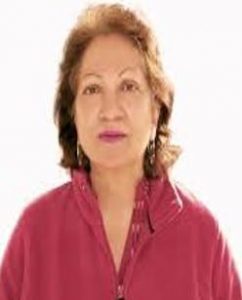
Dr. Zeba A. Sathar
(Tamgha-i-Imtiaz)
Demographer / Researcher
Member
Renowned Demographer / Researcher she is working as Country Director in Population Council, Pakistan. She remained member of Governing Council of PBS for two terms and also Member of Technical Committee of the Governing Council of PBS. In 2006, she received the Tamgha i-Imtiaz award by the President of Pakistan in recognition of her public service to the development sector in Pakistan.
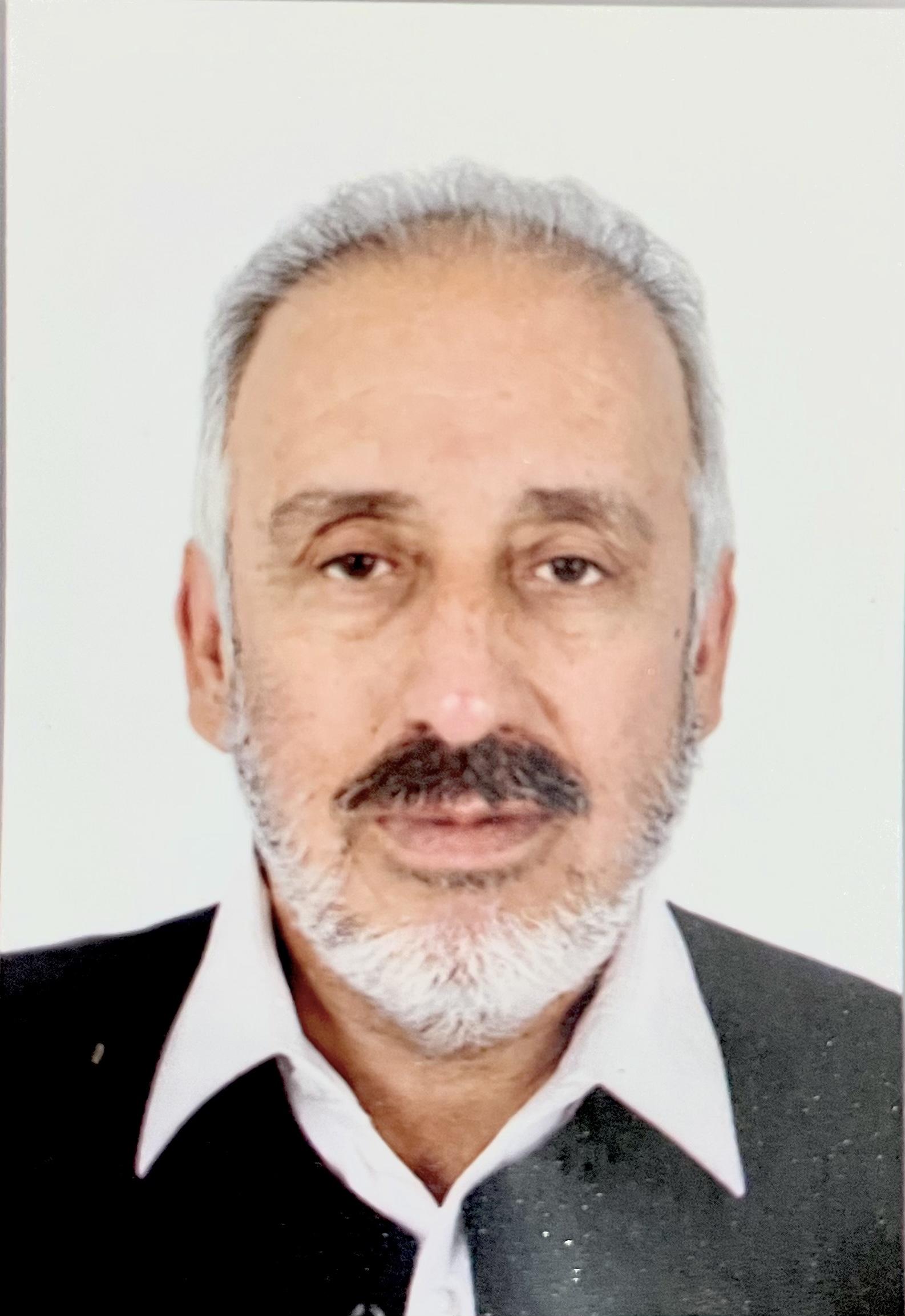
Dr. Syed Muhammad Arif
Former Prof. (Economics) Rtd.
Member
He is a retired Professor in Economics, Department of Economics as well as Director quality enhancement Cell, University of Balochistan, Quetta. He is member of Governing Council of PBS. And have been involved in different census & surveys at planning & designing stage.
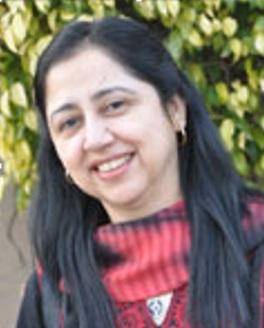
Dr. Durr-e-Nayab
Demographer / Researcher
Member
She is a renowned Demographer / Researcher and vast experience of handling Census / Surveys data. She is currently working as Joint Director / Director Research in PIDE, Islamabad. She has vast knowledge and experience in policy oriented research on demographic issues, especially those related to age structure and its implications, urbanization and class structure.
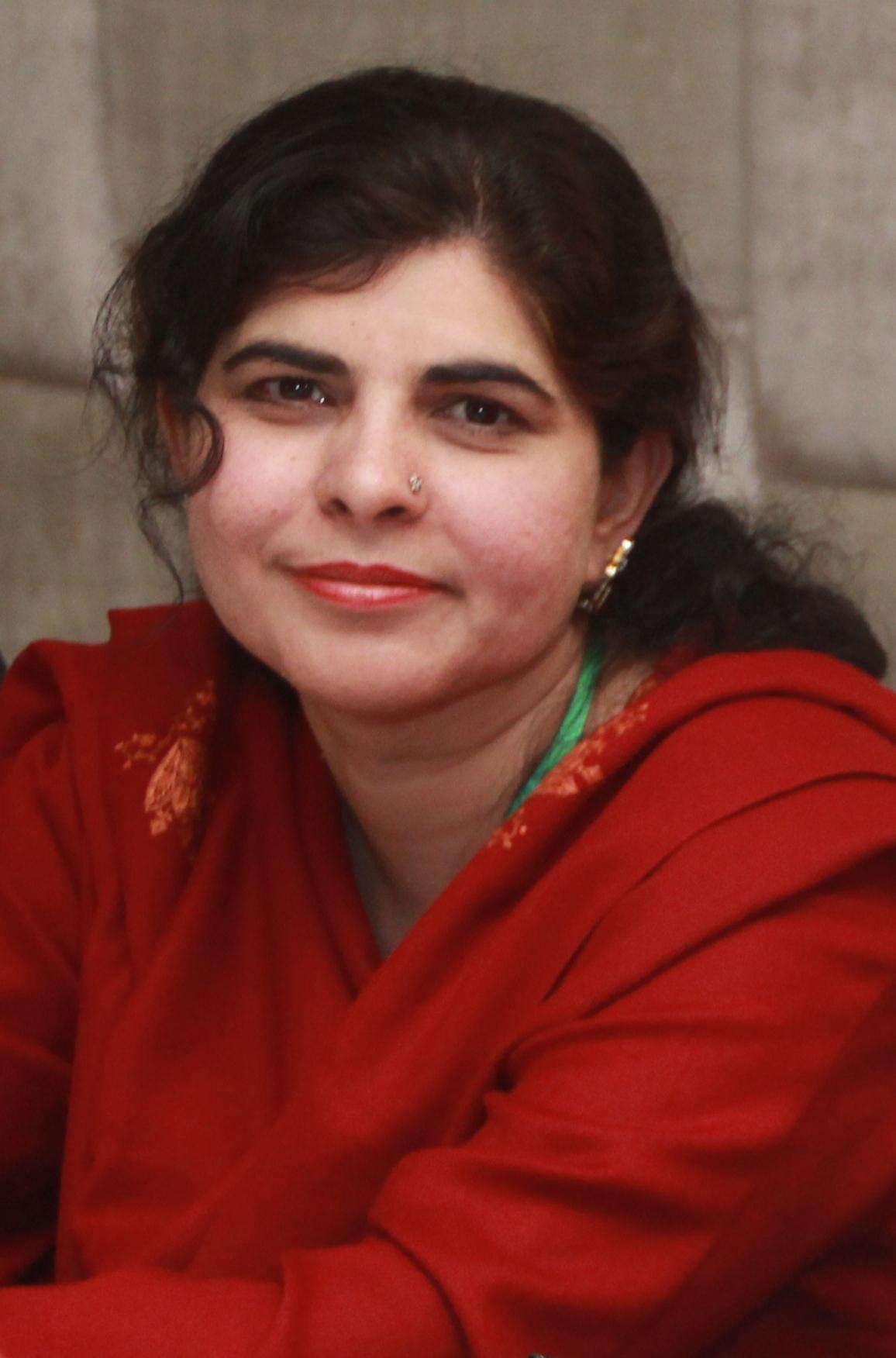
Dr. Ayesha Shiraz
Demographer
Member
She is a renowned Demographer/ Senior Fellow in National Institute of Population Studies (NIPS). She worked as Project Director in UNFPA Research Surveys, Project Coordinator in Execution of KOIKA Collaboration with NIPS. Project Coordinator in Pakistan Demographic and Health Survey (PDHS).
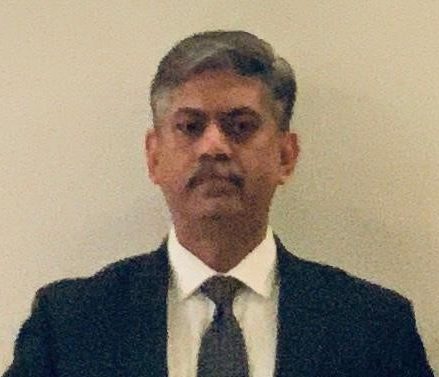
Ehtasham Shahid
Director General (Projects), NADRA
Member
Mr. Ehtasham is working in Citizen ID industry since last 21 years. As part of NADRA’s core team since inception, he has multifaceted experience He has been instrumental in introducing Smart National ID Card, Pakistan Machine Readable Passport, Biometric Border Control System, IBMS and multiple other landmark products for Pakistani nation.
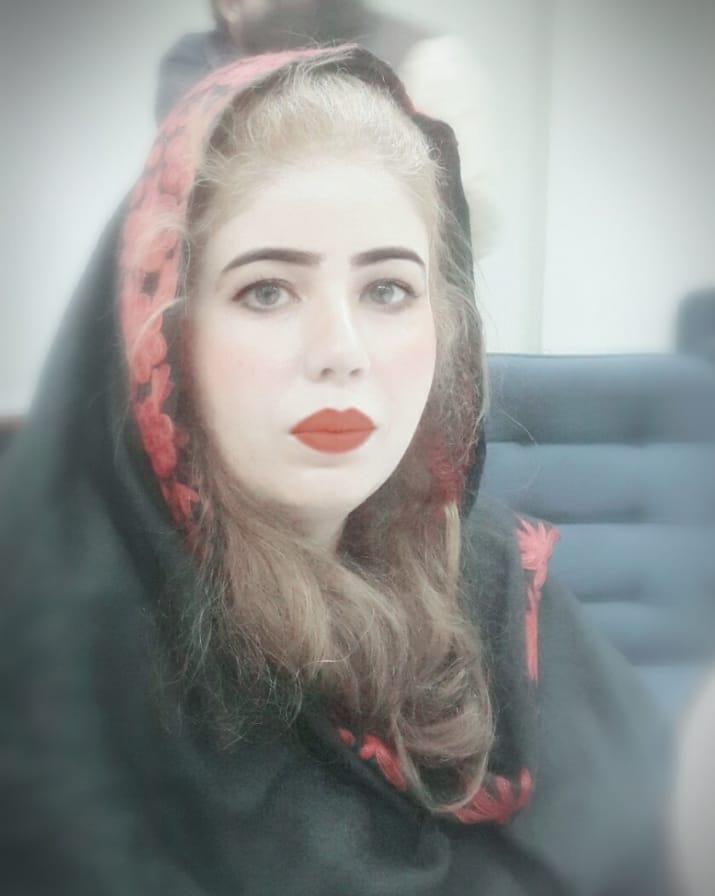
Dr. Sanam Wagma Khattak
Demographer
Member
She is a Demographer and currently working as a Lecturer, Department of Economics, and University of Peshawar. She has been visiting faculty Member at University College Karachi, IQRA University (Karachi Campus), NUML University Peshawar Campus. Presently working as Lecturer in Department of Economics, University of Peshawar.
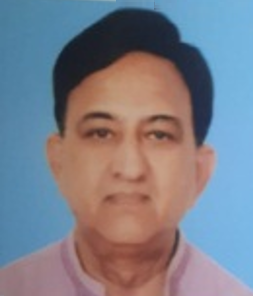
Khawaja Mazhar Jamal
Former Joint Census Commissioner
GIS /Geography Rtd.
Member
He is a retired Joint Census Commissioner (GIS / Geography) in PBS. He has vast experience regarding delimitation of urban / rural areas, updating and adjusting of Census Administrative boundaries and also involved in the previous Censuses. He dealt all administrative, financial and general matters of geography section in PBS.
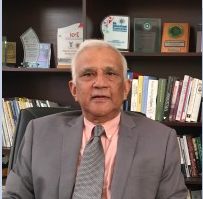
Dr. Mehtab S Karim
Senior Fellow Schar School of Policy,
Govt., George Mason
University in Arlington VA
Co-opted Member
He has held visiting appointments at the Pakistan Institute of Development Economics, Cornell University, the East-West Center, Hawaii, and the National Institute of Child Health and Human Development, Maryland, USA. He has also acted as a consultant to the United Nations and to the World Bank. Professor Karim has published over thirty research articles as well as three co-edited volumes and a monograph on `Reproductive Behaviour in Muslim Countries’.
1st MEETING
2nd MEETING
3rd MEETING
4th MEETING
5th MEETING
6th MEETING
7th MEETING
8th MEETING
Census Monitoring Committee
Census Monitoring Committee
49th Meeting of Council of Common Interest (CCI)
Council of Common Interest (CCI) in its meeting held on 13th January, 2022 approved the conduct of 7th Population & Housing Census. It was decided to conduct the 7th Census adopting International best practices and by using digital technology and GIS monitoring system. The establishment of “Census Monitoring Committee” along with Census questionnaire and work plan was also approved in same meeting.
Census Monitoring Committee for Conduct of 7th Population and Housing Census- 2022
The Council of Common Interest (CCI) in its 49th meeting held on 13th January, 2022 approved the conduct of 7th Population & Housing Census “Digitally” along-with approval of Census work plan, Census Questionnaire and Census Monitoring Committee (CMC) with mandate to oversee / monitor census activities to ensure an expeditious transparent and credible census operation as per TORs. All important decisions related to Census were taken by the committee during its meetings. Out of total 16 meetings, 15 were chaired by Prof. Ahsan Iqbal M/o PD & SI. All collaborating partners like NADRA, SUPARCO, NTC, and stakeholders (provinces etc.) were part of the committee.
It was also decided that M/o PD&SI will present the quarterly progress report to CCI regarding progress of Census activities as per approved timelines. In pursuance of decision of the 49th CCI meeting, Census Monitoring Committee has been notified for effective monitoring, coordination and policy decisions. National Census Coordination Centre (N3C) established at PBS, HQs Islamabad was its secretariat. Accordingly, the Gazette Notification of CMC issued on 5th April, 2022 and circulated to all Committee Members.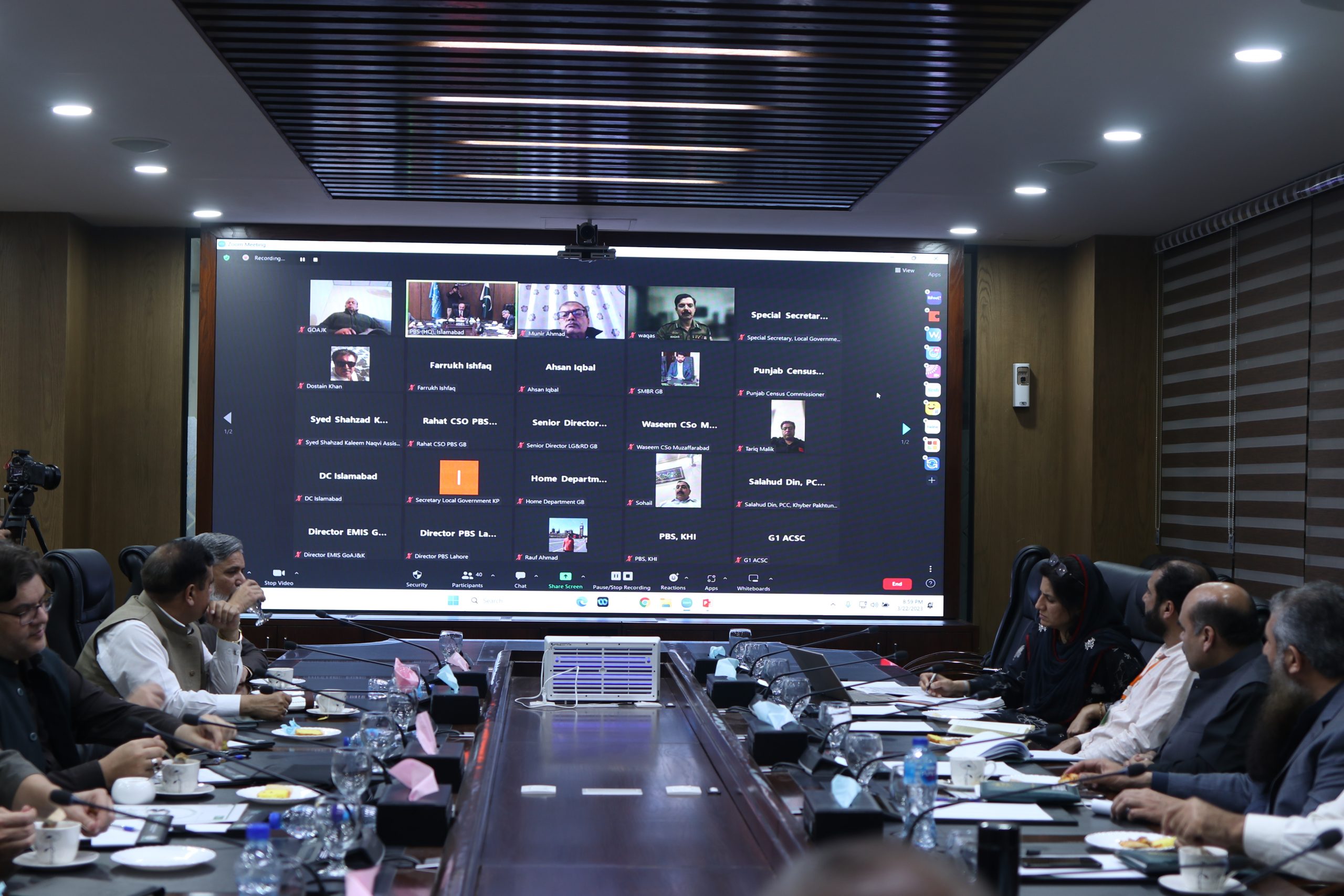
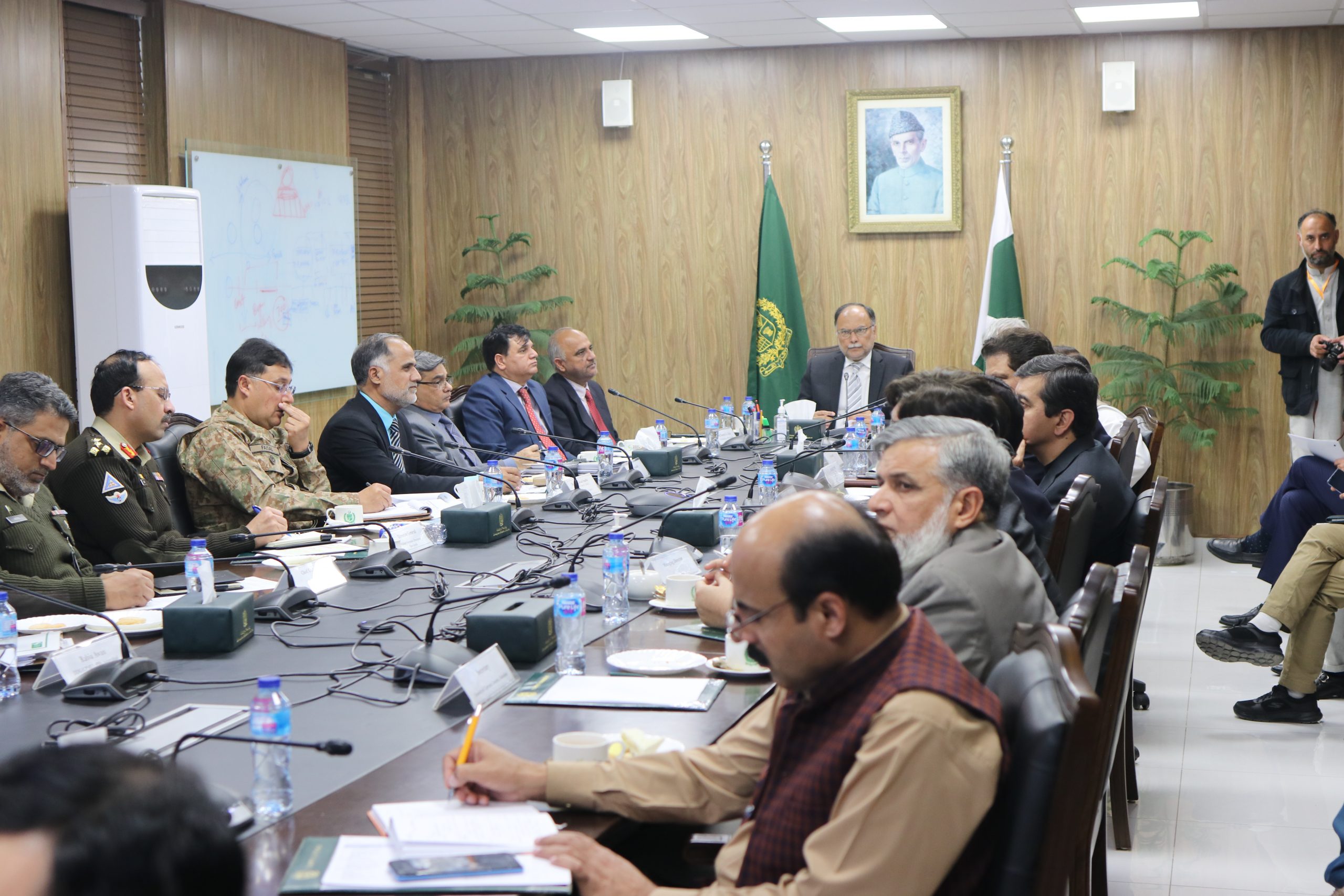
| S.NO | DATE | VENUES |
|---|---|---|
1 | 10th May, 2022 | Pakistan Bureau of Statistics, Islamabad, N3C |
2 | 26th July, 2022 | Ministry of Planning Development & Special Initiatives, P Block, 3rd Floor |
3 | 12th September, 2022 | Ministry of Planning Development & Special Initiatives, P Block, 3rd Floor |
4 | 14th December, 2022 | Pakistan Bureau of Statistics, Islamabad, N3C |
5 | 17th January, 2023 | Pakistan Bureau of Statistics, Islamabad, N3C |
6 | 21st February, 2023 | Ministry of Planning Development & Special Initiatives, P Block, 3rd Floor |
7 | 2nd March, 2023 | Ministry of Planning Development & Special Initiatives, P Block, 3rd Floor |
8 | 11th March, 2023 | Pakistan Bureau of Statistics, Islamabad, N3C |
9 | 22nd March, 2023 | Pakistan Bureau of Statistics, Islamabad, N3C |
10 | 8th April, 2023 | Pakistan Bureau of Statistics, Karachi, P3C |
11 | 15th April, 2023 | Pakistan Bureau of Statistics, Karachi, P3C |
12 | 28th April, 2023 | Pakistan Bureau of Statistics, Islamabad, N3C |
13 | 10th May, 2023 | Ministry of Planning Development & Special Initiatives, P Block, 3rd Floor |
14 | 17th May, 2023 | Ministry of Planning Development & Special Initiatives, P Block, 3rd Floor |
15 | 7th June, 2023 | Ministry of Planning Development & Special Initiatives, P Block, 3rd Floor |
16 | 27th June, 2023 | Ministry of Planning Development & Special Initiatives, P Block, 3rd Floor |
Demographic Committee
CMC in its 9th meeting constituted committee of renowned demographers for “Trend analysis of census data” for 7th Population and Housing Census in the abnormal blocks for further necessary action alongwith forensic audit by NADRA and SUPARCO. Seven meetings of the committee were convened and the committee recommended to conduct Post Enumeration survey. The committee was composed to analyze the problems, techniques and corrective measures through demographic and other techniques.
Terms of Reference:
- The committee will analyze the data of the problematic areas after complete enumeration of the field operation of 7th Population and Housing Census-2023 through demographic and other techniques and decide on its suitability for publication/placing before the competent forum for approval.
- The committee will also suggest alternate statistical techniques/methods and corrective measures in case the data of any specific area/region is found significantly deviated from the expected values which will be derived based on some other relevant available information with Surveys such as LFS, PSLM and Population and Housing Census previously conducted in the country.
Notification of Trend Analysis Committee
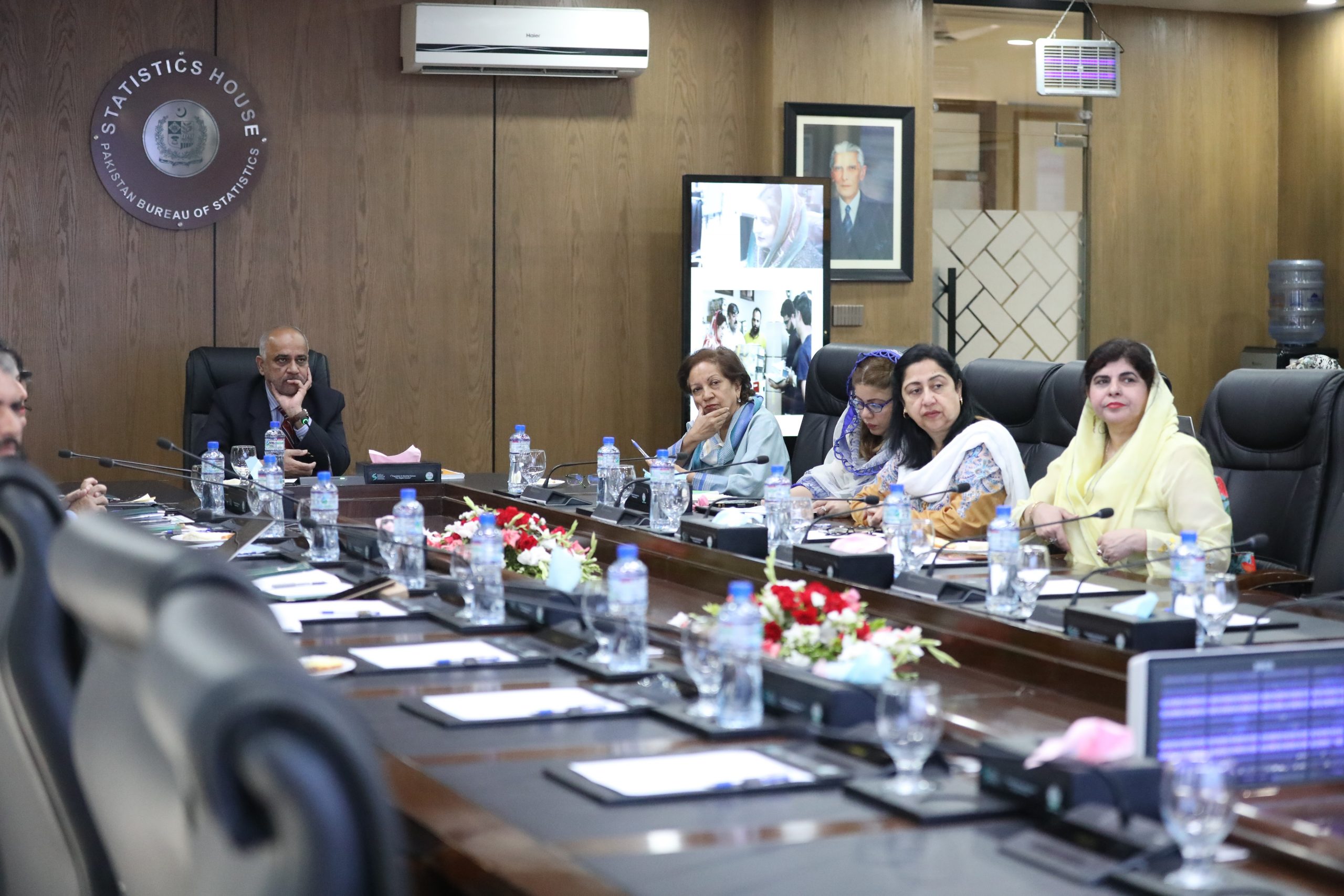
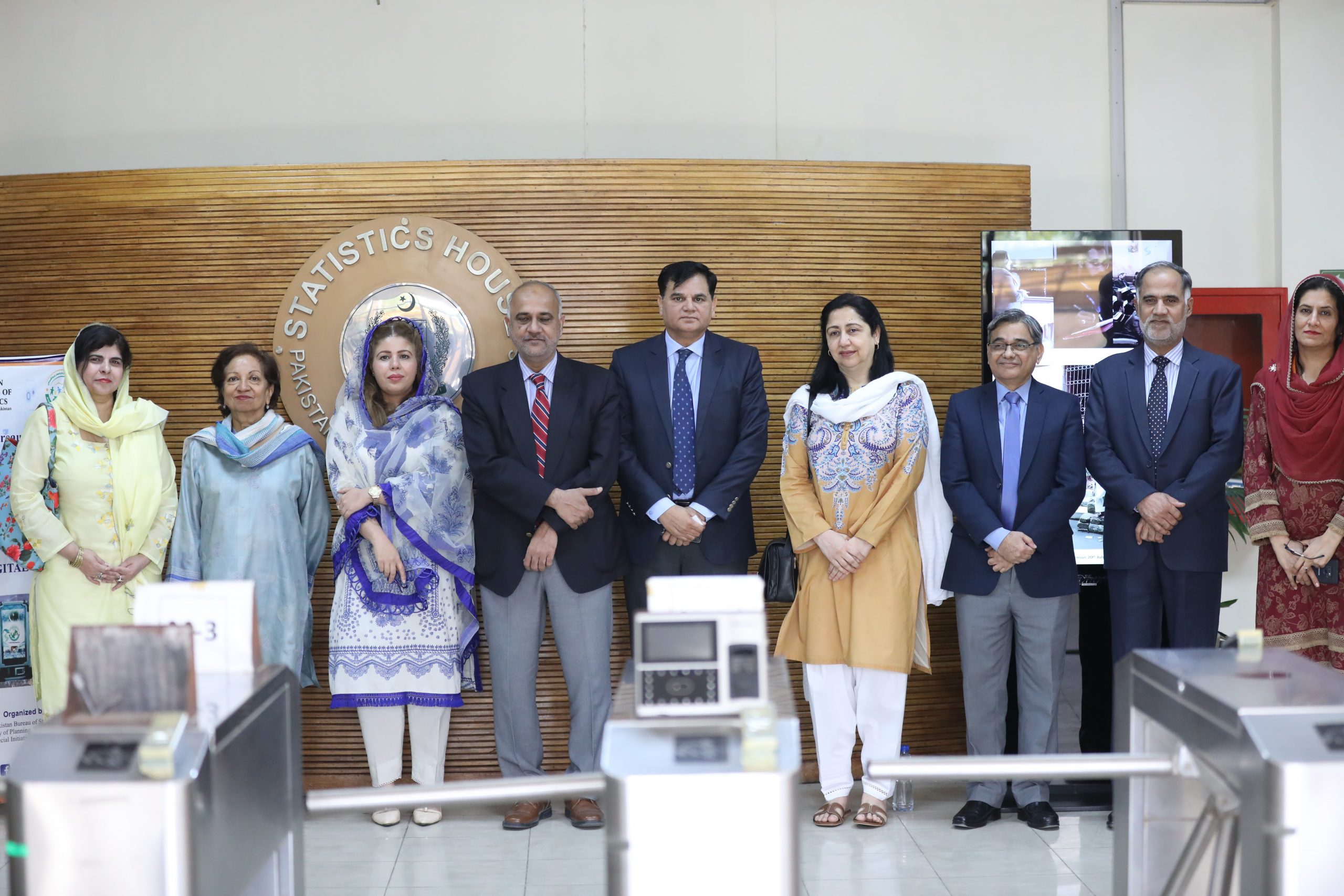
- PRESS RELEASE OF FIRST MEETING
- PRESS RELEASE OF SECOND MEETING
- PRESS RELEASE OF THIRD MEETING
- PRESS RELEASE OF FOURTH MEETING
- PRESS RELEASE OF FIFTH MEETING
- PRESS RELEASE OF SIXTH MEETING
- PRESS RELEASE OF 10TH MEETING
- PRESS RELEASE OF 11TH MEETING
- PRESS RELEASE OF 12TH MEETING
- PRESS RELEASE OF 13TH MEETING
- PRESS RELEASE OF 15TH MEETING
- PRESS RELEASE OF 16TH MEETING
Field Activities
Field Activities
Pilot Census
Pilot Census
As per recommendation of Census Advisory Committee (CAC) to conduct the Pilot Census to test the whole procedure. PBS initiated and completed preparation of Pilot Census including deployment of staff, establishment of support centers, preparation of training manuals/materials etc. Pilot Census of Population and Housing Census has been conducted from 20th July, 2022 to 3rd August, 2022 in 33 selected Admn Districts all over Pakistan, including Azad Jammu & Kashmir and Gilgit Baltistan. Three days training to the Master Trainers was arranged at PBS headquarter during 5th‑7th July, 2022, whereas training to the enumerators by the Master Trainers in the field at the selected 27 stations was imparted during 13th – 17th July, 2022. The enumeration and supervisory staff was provided by the district administration of each province/ district. The enumerators were deputed from various provincial departments and enumeration was completed under the supervision of tehsil and district administration of concerned jurisdiction. The enumeration was conducted for Pilot Census using tablet devices, being digital census, therefore, two software modules were prepared and used for this exercise.
Sampling Methodology
PBS technical committee deliberated on the methodology based on the comparative studies of different countries and keeping in view the ground realities of Pakistan. Initially it was planned to select 2 blocks from each census district (tehsil/district) i.e. 1000 blocks selection from 489 Census districts or to take 2 blocks from each admin districts (156 districts) i.e. 312 blocks.
| Option 1 | Option 2 |
|
|
The proposed sample size was presented to technical committee and detail deliberations were made. However, keeping in view the objective of pilot census which includes the complete test/run of all technologies adopted, it was decided with consensus that the sample from clusters of districts may be selected with parameters like density, accessibility, topography of area instead of selecting sample from all districts. For this purpose, detailed study was done on the block wise information collected by field services and support services about different characteristics. After detailed discussions, it was decided keeping in view the requirement regarding human and financial resources that the sample of not more than 500 blocks may be selected based on area characteristics. It was decided by technical committee as the objective of the pilot was to check the whole process of digital census so there may not need of representativeness of results, therefore efforts may be made to best possible sample with same specific characteristics.
Keeping in view the recommendations, the detailed study was carried out for sample areas having different characteristics i.e. topography (plain, river side residential blocks) accessibility of areas population and area density. Further attributes like electricity line and internet connectivity was also made part of analysis to select best possible sample for true checking of the systems.
Field Operation
Pilot Census was conducted from 20th July, 2022 to 3rd August, 2022 in 33 selected Admn. Districts including Azad Jammu & Kashmir and Gilgit Baltistan. Initially, 429 blocks were selected for enumeration, however, later on due to security/ other issues 12 blocks from Census Districts Haveli and South Waziristan were dropped. Out of the remaining 417 blocks, 368 blocks have been fully enumerated.
Enumeration
In the field, enumerators were responsible to complete one block within the time span of fifteen days. The given days were further divided as follows: first three days for listing of structures, next ten days for enumerations, one day to enumerate leftover structures / households and one day for homeless population.
Progress of Field Work:
For Pilot Census, 417 blocks were selected for enumeration. Three blocks each from districts Washuk, Cholistan and Islamabad were dropped due to flood/rain, non‑availability of a 4×4 vehicle and non-availability/ replacement of enumerator, respectively, at the initial stage of the Pilot Census field operation. Out of the remaining 414 blocks, 368 blocks (88.9%) have been fully enumerated, whereas work in 46 blocks (11.1%) could not be completed due to various reasons, such as rain, big blocks, delay in provision of tablets, battery drainage issue, map related issues etc. In the remaining 46 blocks, only 60% of enumeration work was completed.
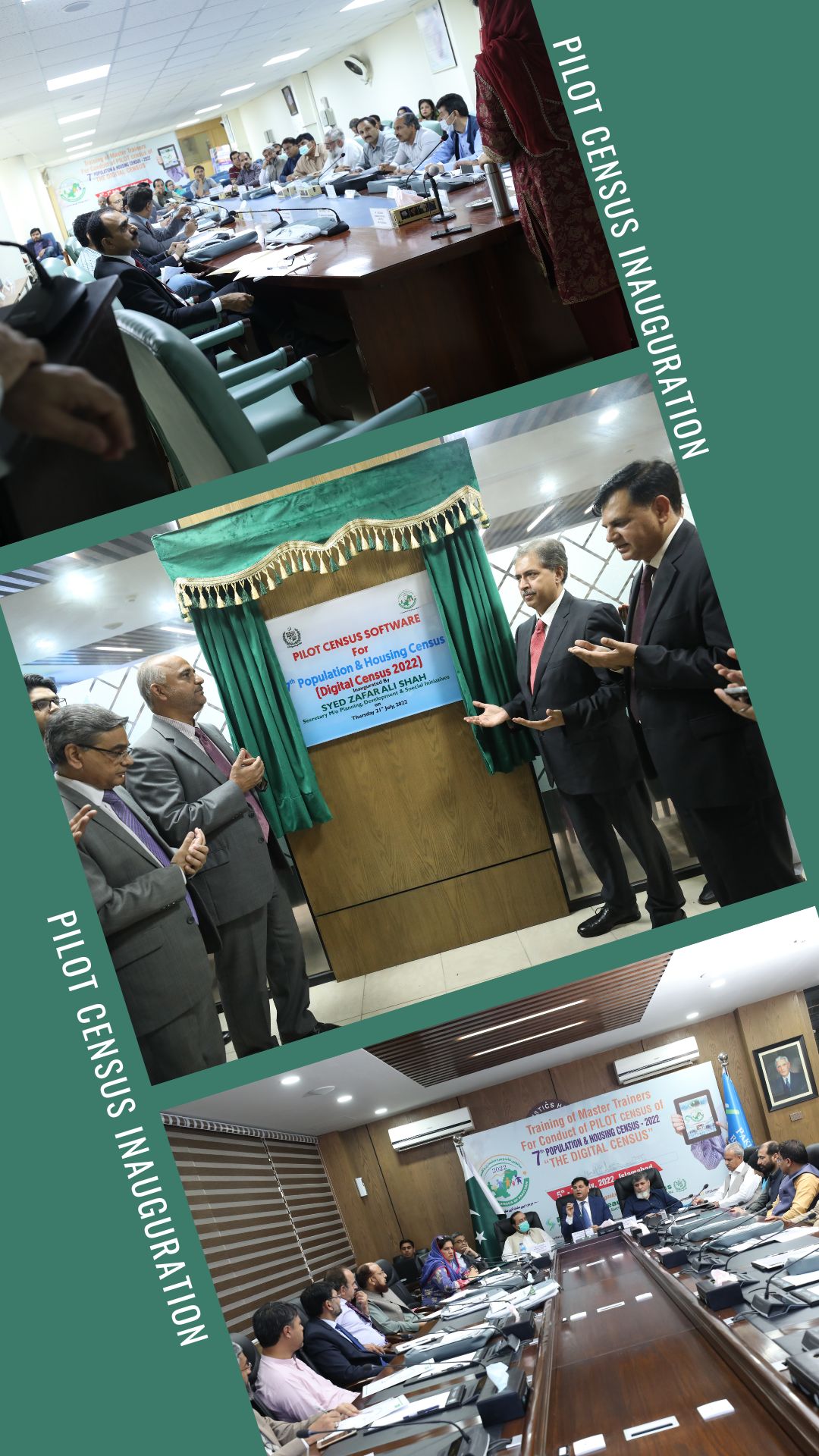
Pilot Census 7th Population and Housing Census 2022
Training
Training for Seventh Population and Housing Census
The training to the census staff is a vital component in the successful conduct of Population and Housing Census (The Digital Census) in a country like Pakistan where literacy level is not very high which complicates the process of understanding the census questionnaires and data collection on tablets. The Pakistan Bureau of Statistics has given special attention to the training of Field Staff to achieve the objectives of collecting accurate Tablet based census data in the 7th Population and Housing Census (The Digital Census).Hiring of Training Firm
PBS engaged a training specialist/ consulting firm SEBCON for designing of training material, to impart training to the master trainers and enumerators by employing modern technologies, and to prepare interactive material for the training purposes dubbed wherever possible in regional languages for better clarity of concepts.Manual of Instructions
The training firm prepared the Manual of Instructions in Urdu, English, Sindhi for training purposes. The audio/video clips of each question related to questionnaire was prepared in all regional languages. All the training material (All Manuals, Audio video clips) were vetted by demographer committee The following types of manual of instructions have been prepared for the Digital Census:- Conceptual Manual
- Field Operational Manual
- Ethical Manual
- Digital Application Manual
- Presentation by using Multimedia, USB, Computers/Laptop, Tablets
- Loose Sheets, Form-1 & 2.
- Tablets
- Black/White Board.
- Ball Point.
- Board Marker.
- Duster.
- Attendance Sheet
- Draft Pad
- PSIC Code
- Affidavit
Training Mechanism
The core components of any census are well-designed questionnaire and extensive training. In the same way, the success of 7th population and housing census based on the comprehensive training of field staff on filling out of questionnaires and use of other helpful modules before the start of field activities. Training sessions for the 7th Population and Housing Census ―The First Ever Digital Census was planned in three tiers to train following three hierarchal levels of trainees.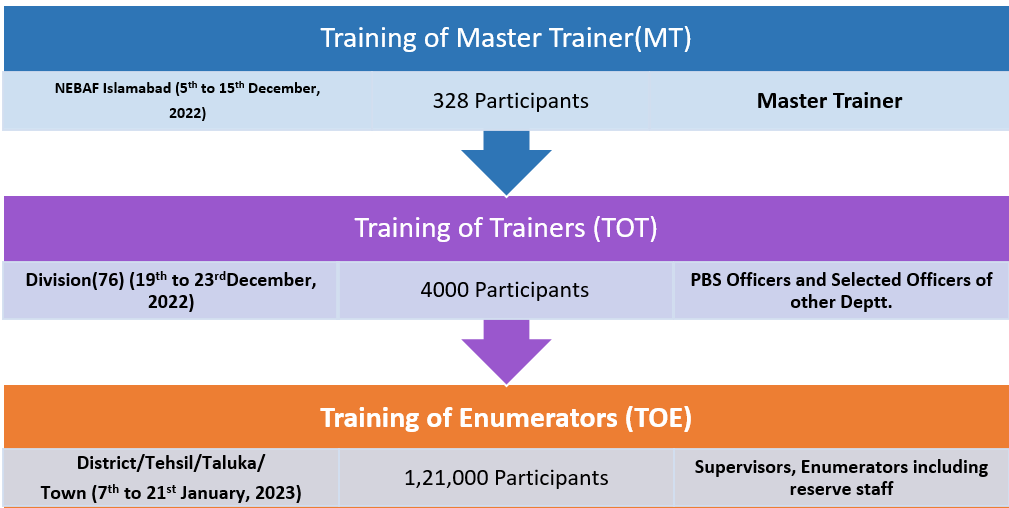
Master Trainers
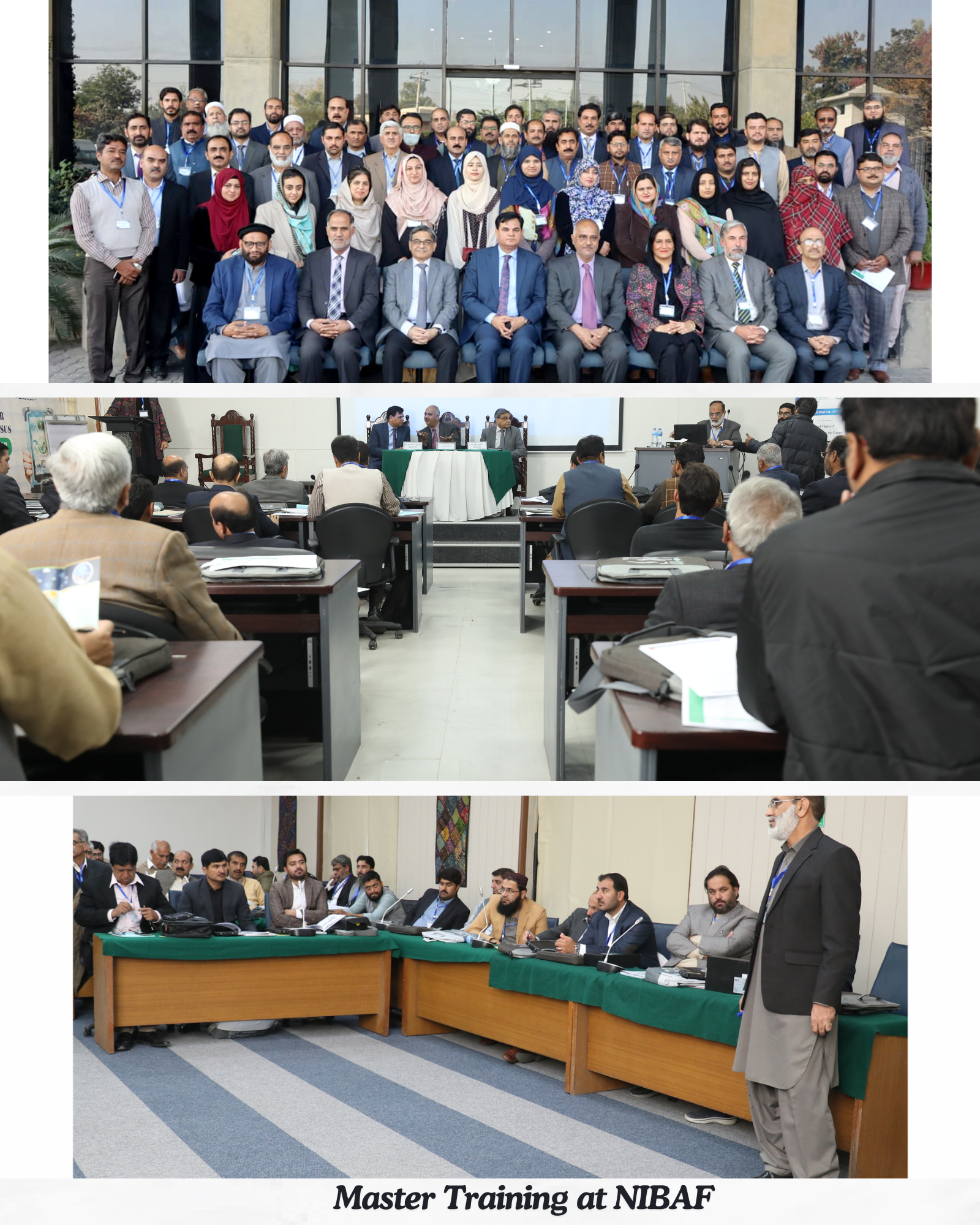
Trainer of Trainers (TOTs)
The Second round was training of trainers. The TOTs (Training of Trainers) were selected from NADRA and PBS. The training was held from 19th to 23rd, December 2022 at divisional Level. There were 77 venues for the Training of TOTs depending on the strength and location of the TOTs.
Training of Enumerators
The final round of training was training of Enumerators across Pakistan in which 1, 21,000 trainers were trained by TOE‘s in 495 Tehsils. The TOEs (Training of Enumerators) were selected from various other civil government departments other than PBS. The training was held from 7th to 21st, January 2023 at Tehsil Level. There were 992 venues for the Training of TOEs. The training was conducted in 3 batches. The Training of the 1st Batch was held from 7th to 11th, January 2023, 2nd batch of TOEs was trained from 12th to 16th, January 2023 and 3rd batch was trained from 17th to 21st, January 2023. The training duration of each batch was 5 days.

Evaluation of Training
For evaluation of each and every aspect of training, different control forms were designed. The evaluation of training for 7th Population and Housing Census is, therefore, performed using the feedback received through control forms, the evaluation of the trainings of each tier was done using evaluation forms. The forms were distributed to all training venues to be filled in by the trainees/enumerators.
Training Material
Field Activities
FIELD ACTIVITIES OF FIRST EVER DIGITAL CENSUS OF PAKISTAN
Chief Census Commissioner, Dr. Naeem uz Zafar inaugurated the Field activities of Pakistan’s first ever digital Census on 1st March, 2023. Face to face interviews along with verification of the data collected through self-enumeration was conducted from 1st March 2023 to 22nd May 2023. During Field Enumeration of 7th Population & Housing Census-the first ever “Digital Census” of Pakistan all structures were geo tagged for real time monitoring through dashboards for provision of reliable and credible data. The dashboards remained accessible to stakeholders during enumeration to ensure transparency and participative monitoring. Originally, the field work was planned to be closed on 4th April,2023 according to schedule, but owing to the benefits of digitization and real time monitoring, the deviations and problems in data were in time identified by the digital system. Therefore, for verification and rectification of such ambiguities, the date was extended three times. This process helped PBS in collecting a reliable data for Policy making and Planning.
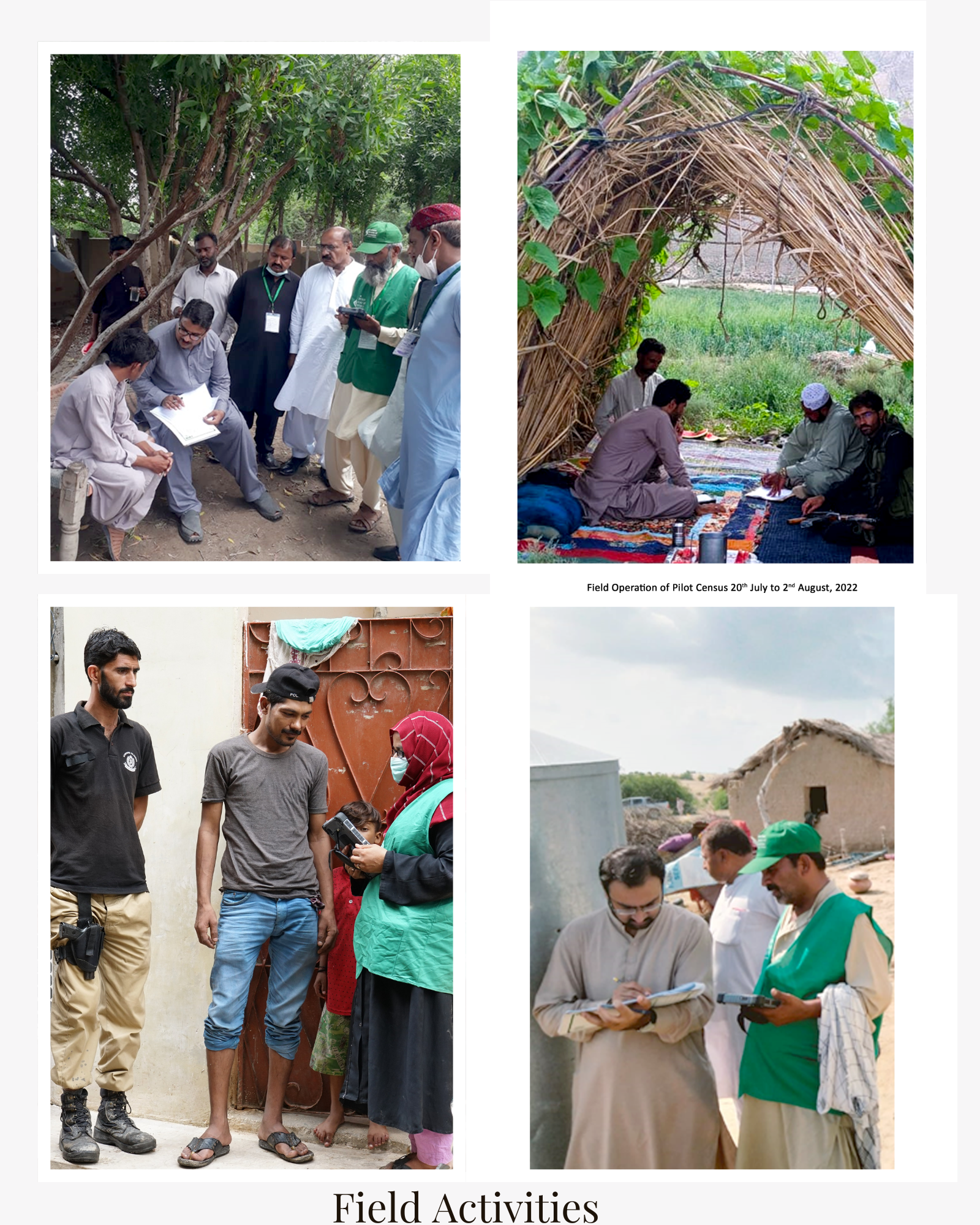

PES
CONDUCT OF PES FOR CENSUS-2023
As per recommendation of CAC and in order to assess the complete coverage of the Population and Housing Census. Census Monitoring Committee approved the complete methodology for selection of sample for Post Enumeration Survey. The main goal of the PES was to evaluate the accuracy of Population and Housing Census data by comparing it with the closely monitored quality data of PES. PBS was conducted Post Enumeration Survey in 48 districts in 12 days, i.e 8th -19th july, 2023.
Number of Selected Districts
| Name of Province | Total No of District | No of Sample Districts |
| KPK | 32* | 12 |
| Punjab | 36 | 13 |
| Sindh | 30** | 10 |
| Balochistan | 34 | 12 |
| Islamabad | 1 | 1 |
| Total | 48 | |
| * Three districts of Kohistan not selected ** Seven districts of Karachi division considered |
Training of PES
The purpose of the training was only to emphasized the purpose and objectives for conducting the PES and its unique requirements for the data collection process as per the approved PES questionnaire. PBS trained 40 individuals as Master trainers in all four provinces and ICT. During the training, the Super Trainer provided comprehensive instructions to the Master Trainers on various aspects of the PES. Master Trainer further trained 2500 enumerators (Field Staff) involved in the PES.
MONITORING MECHANISM FOR PES FIELD ACTIVITY: –
PBS, devised a robust monitoring mechanism for PES that helped identify and address immediately any issues or challenges faced during the PES field operation. For this purposed, PBS staff deputed in the field for coordination activities during the main census field operation were assigned the duties of monitoring and supervision of PES activities, and additional staff were deputed from PBS headquarter for the Provinces of Baluchistan and Sindh with clear TORs and Monitoring performs for daily progress.
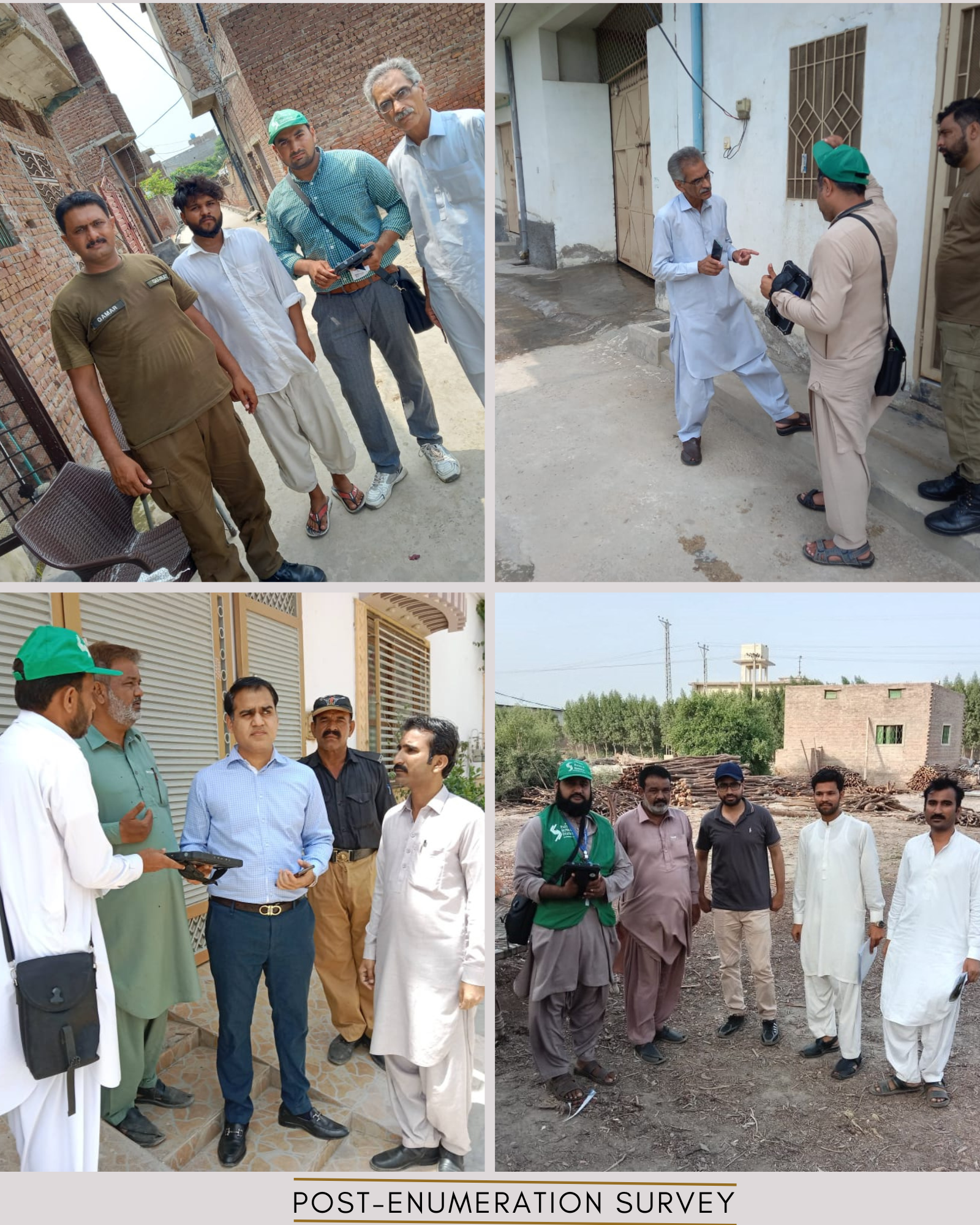
Designing of the IT infrastructure, development of Census ERP, Procurement of 126000 tablets and acquisition of high-resolution imagery (Digital Maps) of the whole country for the “first ever Digital Census” of the world’s fifth biggest country, was a challenging task in shortest period of time which normally takes at least five years for flawless and smooth execution and conduct of census.
Additionally, for provision of data for evidence-based economic policy-formulation, the basic information for conduct of first ever economic census i.e. frame was also dovetailed with the 7th Population & Housing Census, enabling the saving of Rs. 7 Billion of Exchequer due to prudent & visionary planning.
The technological leaps achieved during the census are as follows: –
Indigenous, self-enumeration portal (self.pbos.gov.pk) (first in South Asia, which ensured Public Participation and engagement resulting a trust on the exercise), 6.6 million families of Pakistan visited the portal and showed their confidence on the system.
Automation of the whole census processes and software modules, data transfer models as a Census ERP using best practices like user friendly interface with built-in checks and customized role-based dashboards for efficient management
Offline/ Online features of the design enabled uninterrupted data collection, geotagging, backup for smooth field operations
121,000 IT trained data collectors equipped with hardened tablets with customized operating system linked with dedicated established secured census intranet for seamless data transmission
40 million structures (including all types of economic establishments like factories, shops, banks hostels, schools, colleges, universities, hospitals etc.) geo tagged on indigenous satellite imagery/maps encompassing extensive features, more comprehensive than Google Maps for Pakistan
Seamless data synchronization of almost 5 million individuals on daily basis and over 250 million individuals to data centers in the whole census period.
Dedicated 24/7 Call centers (UAN 080057574) with 150 agents working in three shifts for complaint management and problem resolution managed 2 million in bound and out bound calls along with SMS gateway (9727)
37 working groups constituted on Census Software, Tablets management, census logistics, security call centers etc. for provision of efficient support mechanism for 121,000 field staff
For the first time in history of country, customized role dashboards were provided to the provinces to Assistant Commissioners, Deputy Commissioners and Chief Secretaries which not only provided the live population statistics, but also help to monitor the progress, data collector tracking, live coverage, geotagging, average time for the interview and for identification of the issues for timely reporting & rectification.
Self-Enumeration
Self-Enumeration
Data Collection Through Hybrid Technique
Multi-mode Data Collection Models were used for 7th Population & Housing Census to make the census process more transparent and widely accepted by the masses in order to build confidence building measures on this national level assignment.
- Listing Application
- Enumeration Application
- Self-Enumeration Portal
What is Self-Enumeration?
Self-Enumeration was a new concept that used advanced technology in the census process and gave every resident of Pakistan, the option to fill out the Census questionnaire electronically without the need for the Census interviewer’s visit.
In order to make the system transparent, fool proof and acceptable Self Enumeration was carried out in two steps:

#DigitalCensusPk introduced advanced technology in the census process and gave every resident of Pakistan the option to self-enumerate themselves.
Steps of Self-Enumeration
- Step 1: Register Ur-self
- Step 2: Login
- Step 3: Enter Family Members Information
- Step 4: -Enter Information Regarding Household
- Step 5: -Verification of Data
- Step 6: -Submission of Census-2022 Questionnaire

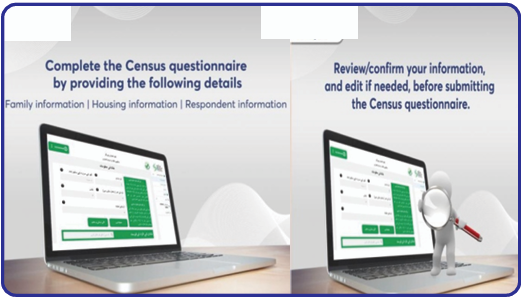
Quality Assurance (QA) Through CATI
QUALITY ASSURANCE (QA) THROUGH CATI (Computer-Assisted Telephone Interview) was used to ensure and verify the collected data is accurate or not. CATI was used for cross checking the data collected through enumeration.

For this purpose, a dedicated 24/7 Call centers (UAN 080057574) with 150 agents working in three shifts for complaint management and problem resolution managed 2 million in bound and out bound calls along with SMS gateway (9727).
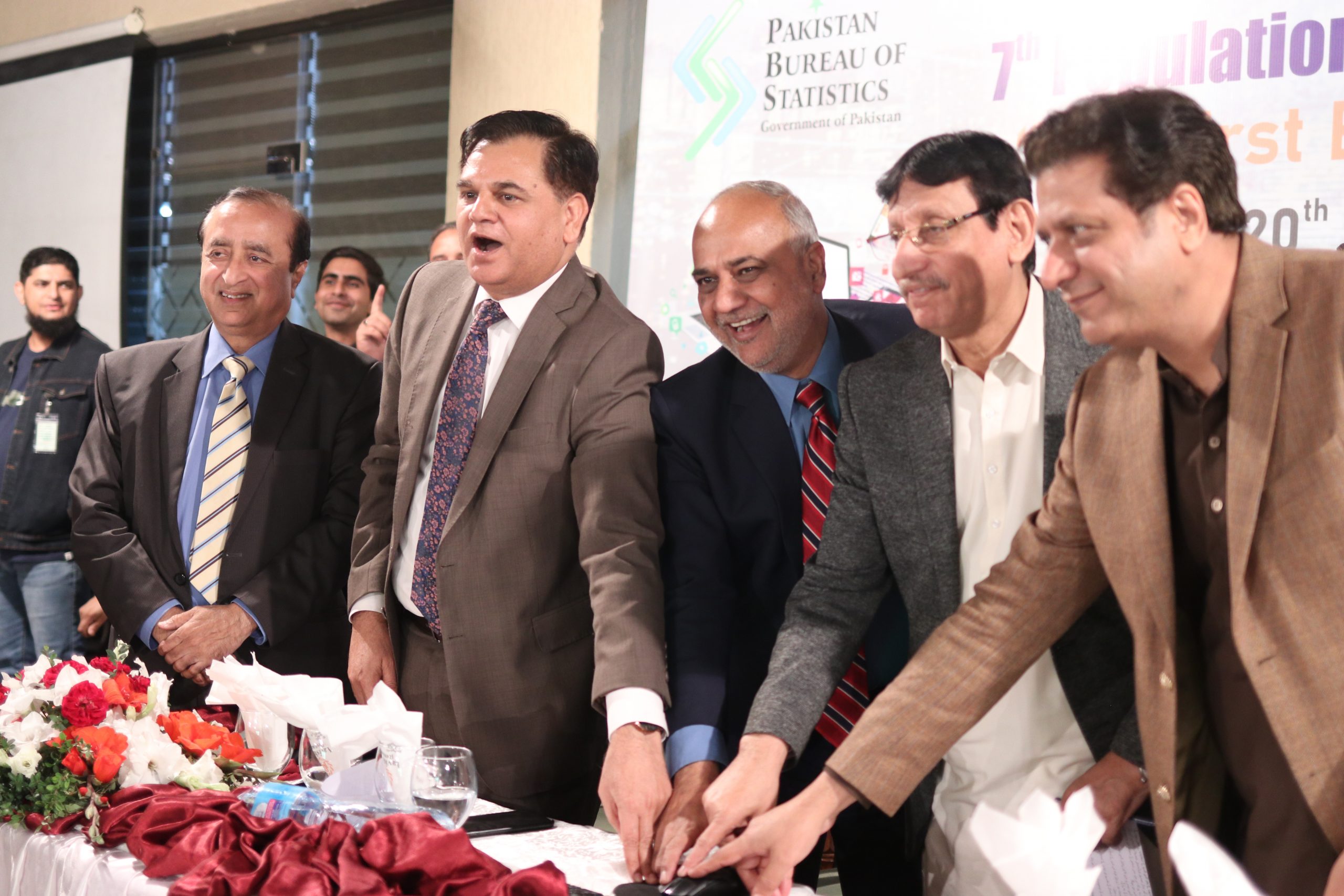
Pilot Census
METADATA OF EDUCATION INDICATORS
METADATA OF EDUCATION INDICATORS
LITERACY RATE:-
Population aged 10 years and older that can read and write a simple statement with understanding in any language expressed as percentage of total population aged 10 years and older.
Methodology:-
Computation Method:-
Numerator of Literacy: – Population aged 10 years and older that is literate.sc1q01a(can a person read simple statement in any language with full understanding)=1 and sc1q02a(can a person write simple statement in any language with full understanding =1
- Denominator of Literacy: – Population aged 10 years and older.
Disaggregation:
Disaggregated analysis available by, age group, gender, region, and by quintile (only at provincial level) etc.
YOUTH LITERACY RATE 15 -24 YEARS:-
Population aged 15 -24 years that can read and write a simple statement with understanding in any language expressed as percentage of total population aged 15-24 years.
Methodology:-
Computation Method:-
Numerator of Literacy: – Population aged 15-24 years that is literate. sc1q01a(can a person read simple statement in any language with full understanding)=1 and sc1q02a(can a person write simple statement in any language with full understanding =1
- Denominator of Literacy: – Population aged 15-24 years.
Disaggregation:
Disaggregated analysis available by, age group, gender, region
ADULT LITERACY RATE 15 YEARS AND ABOVE:-
Population aged 15 years and above that can read and write a simple statement with understanding in any language expressed as percentage of total population aged 15 years and above.
Methodology:-
Computation Method:-
Numerator of Literacy: – Population aged 15 years and above that is literate. sc1q01a(can a person read simple statement in any language with full understanding)=1 and sc1q02a(can a person write simple statement in any language with full understanding =1
- Denominator of Literacy: – Population aged 15 years and above.
Disaggregation:
Disaggregated analysis available by, age group, gender, region
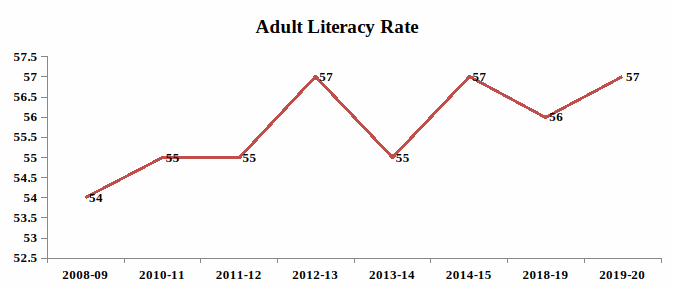
Metadata of Mobile Ownership
Mobile Ownership :-
Population aged 10 years and older that have personal Mobile/Smart Phone ownership in last three months.
Methodology:-
Computation Method:-
Numerator of mobile ownership: – Population aged 10 years and older that own mobile/Smart phone in last three months i.e. sc2q05 = 1 and sc2q05=2
- Denominator : – Population aged 10 years and older.
Disaggregation:
Disaggregated analysis available by, gender, region, and by quintile (only at provincial level) etc.
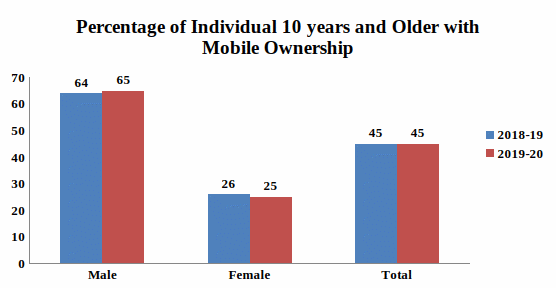




METADATA OF HEALTH INDICATORS
BASED ON RECORD –FULLY IMMUNIZED:-
Definition:-
Children aged 12-23 months who reported having received full immunisation who also have an immunisation card, expressed as a percentage of all children aged 12-23 months. To be classified as fully immunised a child must have received: ’BCG’, PENTA1, PENTA2, PENTA3, PNEUM1, PNEUM2, PNEUM3, Polio0, Polio1, Polio2, Polio3, IPV and Measles1.
Computation Method:-
It is calculated for all children who had a health card, using all immunizations reported, and these were recorded on the card. It is likely that all will have been recorded on the card.
Full immunization means that the child has received: BCG, PENTA1, PENTA2, PENTA3, PNEUM1, PNEUM2, PNEUM3, Polio0, Polio1, Polio2, Polio3, IPV and Measles1.
Disaggregation:
Disaggregated analysis available by gender, region, and by quintile (only at provincial level) etc.
PRE-NATAL:-
Definition:-
Ever married women aged 15 – 49 years who had given birth in the last three years and who had attended at least one pre-natal consultation during the last pregnancy, expressed as a percentage of all ever married women aged 15 – 49 years who had given birth in the last three years.
Methodology:-
Computation Method:-
Currently married women aged 15 – 49 years who had given birth in the last three years and who had attended at least one pre-natal consultation during the last pregnancy, expressed as a percentage of all currently married women aged 15 – 49 years who had given birth in the last three years.
Currently married women aged 15-49 years who had given birth in the last three years and who had attended a pre-natal consultation at the source indicated expressed as a percentage of all of the same women who had had a pre-natal consultation.
Disaggregation:
Disaggregated analysis available by gender, region, and by quintile (only at provincial level) etc.
POST-NATAL:-
Definition:-
Post-natal is the period beginning immediately after the birth of a child and extending for about six weeks. Ever married women aged 15-49 years who received post-natal check-up expressed as a percentage of all ever married women aged 15-49 years who had a birth in the last three years.
Methodology:-
Computation Method:-
Currently married women aged 15-49 years who received post-natal check-up expressed as a percentage of all currently married women aged 15-49 years who had a birth in the last three years.
Percentage of currently married women aged 15-49 years who received post-natal check-up by source of check-up.
Disaggregation:
Disaggregated analysis available by gender, region, and by quintile (only at provincial level) etc.
SKILLED BIRTH ATTENDANT:-
Definition:-
Ever married woman aged 15-49 years who give live or still birth got attended by a skilled birth attendant i.e. (Doctor, Nurse, Midwife and LHV) at the time of its last delivery.
Methodology:-
Computation Method:-
Numerator of Skilled Birth Attendant: Women aged 15 – 49 years who were currently married or widow or divorced or separated and give birth or still birth in last three years prior the survey and got attended by skilled birth.
Denominator of Skilled Birth Attendant: Women aged 15 – 49 years who were currently married or widow or divorced or separated and give birth or still birth in last three years prior the survey.
Disaggregation:
Disaggregated analysis available by gender, region, and by quintile etc.
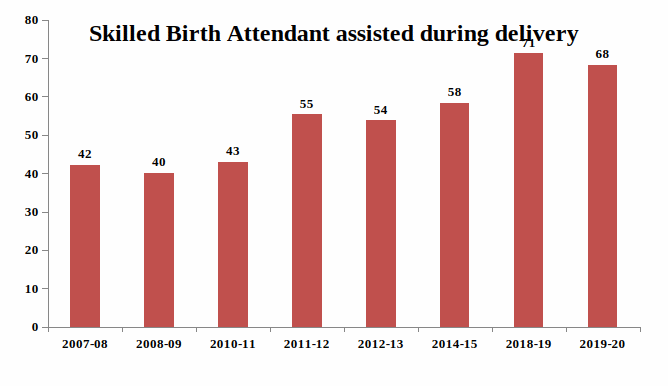




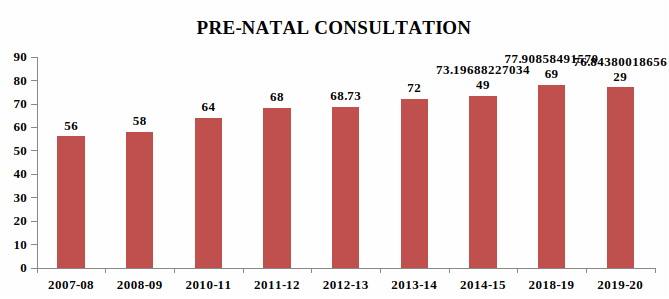




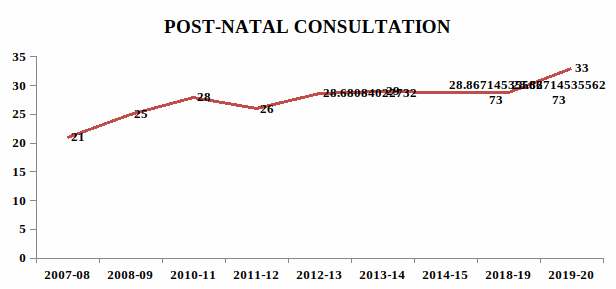




Training
Training Material
METADATA OF EDUCATION INDICATORS
METADATA OF EDUCATION INDICATORS
LITERACY RATE:-
Population aged 10 years and older that can read and write a simple statement with understanding in any language expressed as percentage of total population aged 10 years and older.
Methodology:-
Computation Method:-
Numerator of Literacy: – Population aged 10 years and older that is literate.sc1q01a(can a person read simple statement in any language with full understanding)=1 and sc1q02a(can a person write simple statement in any language with full understanding =1
- Denominator of Literacy: – Population aged 10 years and older.
Disaggregation:
Disaggregated analysis available by, age group, gender, region, and by quintile (only at provincial level) etc.
YOUTH LITERACY RATE 15 -24 YEARS:-
Population aged 15 -24 years that can read and write a simple statement with understanding in any language expressed as percentage of total population aged 15-24 years.
Methodology:-
Computation Method:-
Numerator of Literacy: – Population aged 15-24 years that is literate. sc1q01a(can a person read simple statement in any language with full understanding)=1 and sc1q02a(can a person write simple statement in any language with full understanding =1
- Denominator of Literacy: – Population aged 15-24 years.
Disaggregation:
Disaggregated analysis available by, age group, gender, region
ADULT LITERACY RATE 15 YEARS AND ABOVE:-
Population aged 15 years and above that can read and write a simple statement with understanding in any language expressed as percentage of total population aged 15 years and above.
Methodology:-
Computation Method:-
Numerator of Literacy: – Population aged 15 years and above that is literate. sc1q01a(can a person read simple statement in any language with full understanding)=1 and sc1q02a(can a person write simple statement in any language with full understanding =1
- Denominator of Literacy: – Population aged 15 years and above.
Disaggregation:
Disaggregated analysis available by, age group, gender, region





Metadata of Mobile Ownership
Mobile Ownership :-
Population aged 10 years and older that have personal Mobile/Smart Phone ownership in last three months.
Methodology:-
Computation Method:-
Numerator of mobile ownership: – Population aged 10 years and older that own mobile/Smart phone in last three months i.e. sc2q05 = 1 and sc2q05=2
- Denominator : – Population aged 10 years and older.
Disaggregation:
Disaggregated analysis available by, gender, region, and by quintile (only at provincial level) etc.





METADATA OF HEALTH INDICATORS
BASED ON RECORD –FULLY IMMUNIZED:-
Definition:-
Children aged 12-23 months who reported having received full immunisation who also have an immunisation card, expressed as a percentage of all children aged 12-23 months. To be classified as fully immunised a child must have received: ’BCG’, PENTA1, PENTA2, PENTA3, PNEUM1, PNEUM2, PNEUM3, Polio0, Polio1, Polio2, Polio3, IPV and Measles1.
Computation Method:-
It is calculated for all children who had a health card, using all immunizations reported, and these were recorded on the card. It is likely that all will have been recorded on the card.
Full immunization means that the child has received: BCG, PENTA1, PENTA2, PENTA3, PNEUM1, PNEUM2, PNEUM3, Polio0, Polio1, Polio2, Polio3, IPV and Measles1.
Disaggregation:
Disaggregated analysis available by gender, region, and by quintile (only at provincial level) etc.
PRE-NATAL:-
Definition:-
Ever married women aged 15 – 49 years who had given birth in the last three years and who had attended at least one pre-natal consultation during the last pregnancy, expressed as a percentage of all ever married women aged 15 – 49 years who had given birth in the last three years.
Methodology:-
Computation Method:-
Currently married women aged 15 – 49 years who had given birth in the last three years and who had attended at least one pre-natal consultation during the last pregnancy, expressed as a percentage of all currently married women aged 15 – 49 years who had given birth in the last three years.
Currently married women aged 15-49 years who had given birth in the last three years and who had attended a pre-natal consultation at the source indicated expressed as a percentage of all of the same women who had had a pre-natal consultation.
Disaggregation:
Disaggregated analysis available by gender, region, and by quintile (only at provincial level) etc.
POST-NATAL:-
Definition:-
Post-natal is the period beginning immediately after the birth of a child and extending for about six weeks. Ever married women aged 15-49 years who received post-natal check-up expressed as a percentage of all ever married women aged 15-49 years who had a birth in the last three years.
Methodology:-
Computation Method:-
Currently married women aged 15-49 years who received post-natal check-up expressed as a percentage of all currently married women aged 15-49 years who had a birth in the last three years.
Percentage of currently married women aged 15-49 years who received post-natal check-up by source of check-up.
Disaggregation:
Disaggregated analysis available by gender, region, and by quintile (only at provincial level) etc.
SKILLED BIRTH ATTENDANT:-
Definition:-
Ever married woman aged 15-49 years who give live or still birth got attended by a skilled birth attendant i.e. (Doctor, Nurse, Midwife and LHV) at the time of its last delivery.
Methodology:-
Computation Method:-
Numerator of Skilled Birth Attendant: Women aged 15 – 49 years who were currently married or widow or divorced or separated and give birth or still birth in last three years prior the survey and got attended by skilled birth.
Denominator of Skilled Birth Attendant: Women aged 15 – 49 years who were currently married or widow or divorced or separated and give birth or still birth in last three years prior the survey.
Disaggregation:
Disaggregated analysis available by gender, region, and by quintile etc.















Videos
METADATA OF ICT INDICATORS
HOUSEHOLD WITH COMPUTER/LAPTOP/TABLET:-
Definition:
Household with Access to Computer/Laptop/Tablet Facility expressed in Percentage of total number of household.
Concept:
In PSLM survey, question regarding Access to facility of Computer/Laptop/Tablet by household was asked every in scope household. In Pakistan Due to technological intervention people’s daily has been changed. Computer/Laptop/Tablet are commonly used for creating document, sending email, using powerful software, web browsing ,reading e-book, playing games, listening to music and other passive activities.
Methodology:
Households having Computer/Laptop/Tablet , expressed as a percentage of the total number of household.
Denominator: Total no of households.
Disaggregation:
Disaggregation (urban/rural) and socioeconomic status.
HOUSEHOLD WITH MOBILE:-
Definition:
Household with Access to Mobile Facility expressed in Percentage of total number of household.
Concept:
In PSLM survey, question regarding Access to facility of Mobile by household was asked every in scope household. In Pakistan Due to technological intervention people’s daily has been changed. Mobile phones keep people connected, regardless of the distance.
Methodology:
Households having Mobile, expressed as a percentage of the total number of household.
Denominator: Total no of households.
Disaggregation:
Disaggregation (urban/rural) and socioeconomic status.
HOUSEHOLD WIT INTERNET:-
Definition:
Household with Access to Internet Facility expressed in Percentage of total number of household.
Concept:
In PSLM survey, question regarding Access to facility of Internet by household was asked every in scope household. In Pakistan Due to technological intervention people’s daily has been changed. Internet provide facility to communicate, to gather information, to transact personal and professional business and to entertain themselves.
Methodology:
Households having Internet, expressed as a percentage of the total number of household
Denominator: Total no of households.
Disaggregation:
Disaggregation (urban/rural) and socioeconomic status.
Field Activities
PES
Housing
Concepts and definitions (No of Rooms)
Definition:
Housing units by number of rooms in percentage.
Concept:
In PSLM Surveys, question regarding rooms occupied by household asked from every in scope household. No of rooms occupied by household provide picture of living condition of household.
Number of rooms occupied by the household including bedrooms and living rooms. Storage rooms, bathrooms, toilets, kitchens and rooms for business are not included.
Methodology:
Housing units by number of rooms expressed in percentage
Disaggregation:
Disaggregation (urban/rural) and socioeconomic status.
Calendar Data collection:
Data regarding living standards collected and reported on alternate years through PSLM district level Survey.
Concepts and definitions (Occupancy Status)
Definition:
Housing units by occupancy status in percentage.
Concept:
In PSLM Surveys, question regarding occupancy status of household asked from every in scope household. Housing Status of household provide picture of living condition of household.
Methodology:
Occupancy Status expressed in percentage
Disaggregation:
Disaggregation (urban/rural) and socioeconomic status.
Calendar Data collection:
Data regarding living standards collected and reported on alternate years through PSLM district level Survey.
Concepts and definitions (Fuel used for Lighting)
Definition:
Housing units by fuel used for lighting in percentage.
Concept:
In PSLM Surveys, question regarding fuel used for lighting by household asked from every in scope household. Fuel used for lighting includes Electricity, Gas, Kerosene oil, petrol, diesel, Firewood, Candles, Other. Housing Status of household provide picture of living condition of household.
Methodology:
Housing units by type of fuel used for lighting expressed in percentage
Disaggregation:
Disaggregation (urban/rural) and socioeconomic status.
Calendar Data collection:
Data regarding living standards collected and reported on alternate years through PSLM district level Survey.
Concepts and definitions (Fuel used for Cooking)
Definition:
Housing units by fuel used for cooking in percentage.
Concept:
In PSLM Surveys, question regarding fuel used for cooking by household asked from every in scope household. Fuel for cooking includes Firewood, Gas, Kerosene oil, Dung Cake, Electricity, Crop residue, Charcoal/Coal, Other. Housing Status of household provide picture of living condition of household.
Methodology:
Housing Units by type of fuel used for cooking expressed in percentage
Disaggregation:
Disaggregation (urban/rural) and socioeconomic status.
Calendar Data collection:
Data regarding living standards collected and reported on alternate years through PSLM district level Survey.
Designing of the IT infrastructure, development of Census ERP, Procurement of 126000 tablets and acquisition of high-resolution imagery (Digital Maps) of the whole country for the “first ever Digital Census” of the world’s fifth biggest country, was a challenging task in shortest period of time which normally takes at least five years for flawless and smooth execution and conduct of census.
Additionally, for provision of data for evidence-based economic policy-formulation, the basic information for conduct of first ever economic census i.e. frame was also dovetailed with the 7th Population & Housing Census, enabling the saving of Rs. 7 Billion of Exchequer due to prudent & visionary planning.
The technological leaps achieved during the census are as follows: –
Indigenous, self-enumeration portal (self.pbos.gov.pk) (first in South Asia, which ensured Public Participation and engagement resulting a trust on the exercise), 6.6 million families of Pakistan visited the portal and showed their confidence on the system.
Automation of the whole census processes and software modules, data transfer models as a Census ERP using best practices like user friendly interface with built-in checks and customized role-based dashboards for efficient management
Offline/ Online features of the design enabled uninterrupted data collection, geotagging, backup for smooth field operations
121,000 IT trained data collectors equipped with hardened tablets with customized operating system linked with dedicated established secured census intranet for seamless data transmission
40 million structures (including all types of economic establishments like factories, shops, banks hostels, schools, colleges, universities, hospitals etc.) geo tagged on indigenous satellite imagery/maps encompassing extensive features, more comprehensive than Google Maps for Pakistan
Seamless data synchronization of almost 5 million individuals on daily basis and over 250 million individuals to data centers in the whole census period.
Dedicated 24/7 Call centers (UAN 080057574) with 150 agents working in three shifts for complaint management and problem resolution managed 2 million in bound and out bound calls along with SMS gateway (9727)
37 working groups constituted on Census Software, Tablets management, census logistics, security call centers etc. for provision of efficient support mechanism for 121,000 field staff
For the first time in history of country, customized role dashboards were provided to the provinces to Assistant Commissioners, Deputy Commissioners and Chief Secretaries which not only provided the live population statistics, but also help to monitor the progress, data collector tracking, live coverage, geotagging, average time for the interview and for identification of the issues for timely reporting & rectification.
Salient Features
SALIENT FEATURES OF THE DIGITAL CENSUS
Designing of the IT infrastructure, development of Census ERP, Procurement of 126000 tablets and acquisition of high-resolution imagery (Digital Maps) of the whole country for the “first ever Digital Census” of the world’s fifth biggest country, was a challenging task in shortest period of time which normally takes at least five years for flawless and smooth execution and conduct of census.
Additionally, for provision of data for evidence-based economic policy-formulation, the basic information for conduct of first ever economic census i.e. frame was also dovetailed with the 7th Population & Housing Census, enabling the saving of Rs. 7 Billion of Exchequer due to prudent & visionary planning.
The technological leaps achieved during the census are as follows: –
Indigenous, self-enumeration portal (www.self.pbos.gov.pk) (first in South Asia, which ensured Public Participation and engagement resulting a trust on the exercise), 6.6 million families of Pakistan visited the portal and showed their confidence on the system.
Automation of the whole census processes and software modules, data transfer models as a Census ERP using best practices like user friendly interface with built-in checks and customized role-based dashboards for efficient management
Offline/ Online features of the design enabled uninterrupted data collection, geotagging, backup for smooth field operations
121,000 IT trained data collectors equipped with hardened tablets with customized operating system linked with dedicated established secured census intranet for seamless data transmission
40 million structures (including all types of economic establishments like factories, shops, banks hostels, schools, colleges, universities, hospitals etc.) geo tagged on indigenous satellite imagery/maps encompassing extensive features, more comprehensive than Google Maps for Pakistan
Seamless data synchronization of almost 5 million individuals on daily basis and over 250 million individuals to data centers in the whole census period.
Dedicated 24/7 Call centers (UAN 080057574) with 150 agents working in three shifts for complaint management and problem resolution managed 2 million in bound and out bound calls along with SMS gateway (9727)
37 working groups constituted on Census Software, Tablets management, census logistics, security call centers etc. for provision of efficient support mechanism for 121,000 field staff
For the first time in history of country, customized role dashboards were provided to the provinces to Assistant Commissioners, Deputy Commissioners and Chief Secretaries which not only provided the live population statistics, but also help to monitor the progress, data collector tracking, live coverage, geotagging, average time for the interview and for identification of the issues for timely reporting & rectification.
Pilot Census
METADATA OF EDUCATION INDICATORS
METADATA OF EDUCATION INDICATORS
LITERACY RATE:-
Population aged 10 years and older that can read and write a simple statement with understanding in any language expressed as percentage of total population aged 10 years and older.
Methodology:-
Computation Method:-
Numerator of Literacy: – Population aged 10 years and older that is literate.sc1q01a(can a person read simple statement in any language with full understanding)=1 and sc1q02a(can a person write simple statement in any language with full understanding =1
- Denominator of Literacy: – Population aged 10 years and older.
Disaggregation:
Disaggregated analysis available by, age group, gender, region, and by quintile (only at provincial level) etc.
YOUTH LITERACY RATE 15 -24 YEARS:-
Population aged 15 -24 years that can read and write a simple statement with understanding in any language expressed as percentage of total population aged 15-24 years.
Methodology:-
Computation Method:-
Numerator of Literacy: – Population aged 15-24 years that is literate. sc1q01a(can a person read simple statement in any language with full understanding)=1 and sc1q02a(can a person write simple statement in any language with full understanding =1
- Denominator of Literacy: – Population aged 15-24 years.
Disaggregation:
Disaggregated analysis available by, age group, gender, region
ADULT LITERACY RATE 15 YEARS AND ABOVE:-
Population aged 15 years and above that can read and write a simple statement with understanding in any language expressed as percentage of total population aged 15 years and above.
Methodology:-
Computation Method:-
Numerator of Literacy: – Population aged 15 years and above that is literate. sc1q01a(can a person read simple statement in any language with full understanding)=1 and sc1q02a(can a person write simple statement in any language with full understanding =1
- Denominator of Literacy: – Population aged 15 years and above.
Disaggregation:
Disaggregated analysis available by, age group, gender, region





Metadata of Mobile Ownership
Mobile Ownership :-
Population aged 10 years and older that have personal Mobile/Smart Phone ownership in last three months.
Methodology:-
Computation Method:-
Numerator of mobile ownership: – Population aged 10 years and older that own mobile/Smart phone in last three months i.e. sc2q05 = 1 and sc2q05=2
- Denominator : – Population aged 10 years and older.
Disaggregation:
Disaggregated analysis available by, gender, region, and by quintile (only at provincial level) etc.





METADATA OF HEALTH INDICATORS
BASED ON RECORD –FULLY IMMUNIZED:-
Definition:-
Children aged 12-23 months who reported having received full immunisation who also have an immunisation card, expressed as a percentage of all children aged 12-23 months. To be classified as fully immunised a child must have received: ’BCG’, PENTA1, PENTA2, PENTA3, PNEUM1, PNEUM2, PNEUM3, Polio0, Polio1, Polio2, Polio3, IPV and Measles1.
Computation Method:-
It is calculated for all children who had a health card, using all immunizations reported, and these were recorded on the card. It is likely that all will have been recorded on the card.
Full immunization means that the child has received: BCG, PENTA1, PENTA2, PENTA3, PNEUM1, PNEUM2, PNEUM3, Polio0, Polio1, Polio2, Polio3, IPV and Measles1.
Disaggregation:
Disaggregated analysis available by gender, region, and by quintile (only at provincial level) etc.
PRE-NATAL:-
Definition:-
Ever married women aged 15 – 49 years who had given birth in the last three years and who had attended at least one pre-natal consultation during the last pregnancy, expressed as a percentage of all ever married women aged 15 – 49 years who had given birth in the last three years.
Methodology:-
Computation Method:-
Currently married women aged 15 – 49 years who had given birth in the last three years and who had attended at least one pre-natal consultation during the last pregnancy, expressed as a percentage of all currently married women aged 15 – 49 years who had given birth in the last three years.
Currently married women aged 15-49 years who had given birth in the last three years and who had attended a pre-natal consultation at the source indicated expressed as a percentage of all of the same women who had had a pre-natal consultation.
Disaggregation:
Disaggregated analysis available by gender, region, and by quintile (only at provincial level) etc.
POST-NATAL:-
Definition:-
Post-natal is the period beginning immediately after the birth of a child and extending for about six weeks. Ever married women aged 15-49 years who received post-natal check-up expressed as a percentage of all ever married women aged 15-49 years who had a birth in the last three years.
Methodology:-
Computation Method:-
Currently married women aged 15-49 years who received post-natal check-up expressed as a percentage of all currently married women aged 15-49 years who had a birth in the last three years.
Percentage of currently married women aged 15-49 years who received post-natal check-up by source of check-up.
Disaggregation:
Disaggregated analysis available by gender, region, and by quintile (only at provincial level) etc.
SKILLED BIRTH ATTENDANT:-
Definition:-
Ever married woman aged 15-49 years who give live or still birth got attended by a skilled birth attendant i.e. (Doctor, Nurse, Midwife and LHV) at the time of its last delivery.
Methodology:-
Computation Method:-
Numerator of Skilled Birth Attendant: Women aged 15 – 49 years who were currently married or widow or divorced or separated and give birth or still birth in last three years prior the survey and got attended by skilled birth.
Denominator of Skilled Birth Attendant: Women aged 15 – 49 years who were currently married or widow or divorced or separated and give birth or still birth in last three years prior the survey.
Disaggregation:
Disaggregated analysis available by gender, region, and by quintile etc.















Training
Training Material
METADATA OF EDUCATION INDICATORS
METADATA OF EDUCATION INDICATORS
LITERACY RATE:-
Population aged 10 years and older that can read and write a simple statement with understanding in any language expressed as percentage of total population aged 10 years and older.
Methodology:-
Computation Method:-
Numerator of Literacy: – Population aged 10 years and older that is literate.sc1q01a(can a person read simple statement in any language with full understanding)=1 and sc1q02a(can a person write simple statement in any language with full understanding =1
- Denominator of Literacy: – Population aged 10 years and older.
Disaggregation:
Disaggregated analysis available by, age group, gender, region, and by quintile (only at provincial level) etc.
YOUTH LITERACY RATE 15 -24 YEARS:-
Population aged 15 -24 years that can read and write a simple statement with understanding in any language expressed as percentage of total population aged 15-24 years.
Methodology:-
Computation Method:-
Numerator of Literacy: – Population aged 15-24 years that is literate. sc1q01a(can a person read simple statement in any language with full understanding)=1 and sc1q02a(can a person write simple statement in any language with full understanding =1
- Denominator of Literacy: – Population aged 15-24 years.
Disaggregation:
Disaggregated analysis available by, age group, gender, region
ADULT LITERACY RATE 15 YEARS AND ABOVE:-
Population aged 15 years and above that can read and write a simple statement with understanding in any language expressed as percentage of total population aged 15 years and above.
Methodology:-
Computation Method:-
Numerator of Literacy: – Population aged 15 years and above that is literate. sc1q01a(can a person read simple statement in any language with full understanding)=1 and sc1q02a(can a person write simple statement in any language with full understanding =1
- Denominator of Literacy: – Population aged 15 years and above.
Disaggregation:
Disaggregated analysis available by, age group, gender, region





Metadata of Mobile Ownership
Mobile Ownership :-
Population aged 10 years and older that have personal Mobile/Smart Phone ownership in last three months.
Methodology:-
Computation Method:-
Numerator of mobile ownership: – Population aged 10 years and older that own mobile/Smart phone in last three months i.e. sc2q05 = 1 and sc2q05=2
- Denominator : – Population aged 10 years and older.
Disaggregation:
Disaggregated analysis available by, gender, region, and by quintile (only at provincial level) etc.





METADATA OF HEALTH INDICATORS
BASED ON RECORD –FULLY IMMUNIZED:-
Definition:-
Children aged 12-23 months who reported having received full immunisation who also have an immunisation card, expressed as a percentage of all children aged 12-23 months. To be classified as fully immunised a child must have received: ’BCG’, PENTA1, PENTA2, PENTA3, PNEUM1, PNEUM2, PNEUM3, Polio0, Polio1, Polio2, Polio3, IPV and Measles1.
Computation Method:-
It is calculated for all children who had a health card, using all immunizations reported, and these were recorded on the card. It is likely that all will have been recorded on the card.
Full immunization means that the child has received: BCG, PENTA1, PENTA2, PENTA3, PNEUM1, PNEUM2, PNEUM3, Polio0, Polio1, Polio2, Polio3, IPV and Measles1.
Disaggregation:
Disaggregated analysis available by gender, region, and by quintile (only at provincial level) etc.
PRE-NATAL:-
Definition:-
Ever married women aged 15 – 49 years who had given birth in the last three years and who had attended at least one pre-natal consultation during the last pregnancy, expressed as a percentage of all ever married women aged 15 – 49 years who had given birth in the last three years.
Methodology:-
Computation Method:-
Currently married women aged 15 – 49 years who had given birth in the last three years and who had attended at least one pre-natal consultation during the last pregnancy, expressed as a percentage of all currently married women aged 15 – 49 years who had given birth in the last three years.
Currently married women aged 15-49 years who had given birth in the last three years and who had attended a pre-natal consultation at the source indicated expressed as a percentage of all of the same women who had had a pre-natal consultation.
Disaggregation:
Disaggregated analysis available by gender, region, and by quintile (only at provincial level) etc.
POST-NATAL:-
Definition:-
Post-natal is the period beginning immediately after the birth of a child and extending for about six weeks. Ever married women aged 15-49 years who received post-natal check-up expressed as a percentage of all ever married women aged 15-49 years who had a birth in the last three years.
Methodology:-
Computation Method:-
Currently married women aged 15-49 years who received post-natal check-up expressed as a percentage of all currently married women aged 15-49 years who had a birth in the last three years.
Percentage of currently married women aged 15-49 years who received post-natal check-up by source of check-up.
Disaggregation:
Disaggregated analysis available by gender, region, and by quintile (only at provincial level) etc.
SKILLED BIRTH ATTENDANT:-
Definition:-
Ever married woman aged 15-49 years who give live or still birth got attended by a skilled birth attendant i.e. (Doctor, Nurse, Midwife and LHV) at the time of its last delivery.
Methodology:-
Computation Method:-
Numerator of Skilled Birth Attendant: Women aged 15 – 49 years who were currently married or widow or divorced or separated and give birth or still birth in last three years prior the survey and got attended by skilled birth.
Denominator of Skilled Birth Attendant: Women aged 15 – 49 years who were currently married or widow or divorced or separated and give birth or still birth in last three years prior the survey.
Disaggregation:
Disaggregated analysis available by gender, region, and by quintile etc.















Videos
METADATA OF ICT INDICATORS
HOUSEHOLD WITH COMPUTER/LAPTOP/TABLET:-
Definition:
Household with Access to Computer/Laptop/Tablet Facility expressed in Percentage of total number of household.
Concept:
In PSLM survey, question regarding Access to facility of Computer/Laptop/Tablet by household was asked every in scope household. In Pakistan Due to technological intervention people’s daily has been changed. Computer/Laptop/Tablet are commonly used for creating document, sending email, using powerful software, web browsing ,reading e-book, playing games, listening to music and other passive activities.
Methodology:
Households having Computer/Laptop/Tablet , expressed as a percentage of the total number of household.
Denominator: Total no of households.
Disaggregation:
Disaggregation (urban/rural) and socioeconomic status.
HOUSEHOLD WITH MOBILE:-
Definition:
Household with Access to Mobile Facility expressed in Percentage of total number of household.
Concept:
In PSLM survey, question regarding Access to facility of Mobile by household was asked every in scope household. In Pakistan Due to technological intervention people’s daily has been changed. Mobile phones keep people connected, regardless of the distance.
Methodology:
Households having Mobile, expressed as a percentage of the total number of household.
Denominator: Total no of households.
Disaggregation:
Disaggregation (urban/rural) and socioeconomic status.
HOUSEHOLD WIT INTERNET:-
Definition:
Household with Access to Internet Facility expressed in Percentage of total number of household.
Concept:
In PSLM survey, question regarding Access to facility of Internet by household was asked every in scope household. In Pakistan Due to technological intervention people’s daily has been changed. Internet provide facility to communicate, to gather information, to transact personal and professional business and to entertain themselves.
Methodology:
Households having Internet, expressed as a percentage of the total number of household
Denominator: Total no of households.
Disaggregation:
Disaggregation (urban/rural) and socioeconomic status.
Field Activities
PES
Housing
Concepts and definitions (No of Rooms)
Definition:
Housing units by number of rooms in percentage.
Concept:
In PSLM Surveys, question regarding rooms occupied by household asked from every in scope household. No of rooms occupied by household provide picture of living condition of household.
Number of rooms occupied by the household including bedrooms and living rooms. Storage rooms, bathrooms, toilets, kitchens and rooms for business are not included.
Methodology:
Housing units by number of rooms expressed in percentage
Disaggregation:
Disaggregation (urban/rural) and socioeconomic status.
Calendar Data collection:
Data regarding living standards collected and reported on alternate years through PSLM district level Survey.
Concepts and definitions (Occupancy Status)
Definition:
Housing units by occupancy status in percentage.
Concept:
In PSLM Surveys, question regarding occupancy status of household asked from every in scope household. Housing Status of household provide picture of living condition of household.
Methodology:
Occupancy Status expressed in percentage
Disaggregation:
Disaggregation (urban/rural) and socioeconomic status.
Calendar Data collection:
Data regarding living standards collected and reported on alternate years through PSLM district level Survey.
Concepts and definitions (Fuel used for Lighting)
Definition:
Housing units by fuel used for lighting in percentage.
Concept:
In PSLM Surveys, question regarding fuel used for lighting by household asked from every in scope household. Fuel used for lighting includes Electricity, Gas, Kerosene oil, petrol, diesel, Firewood, Candles, Other. Housing Status of household provide picture of living condition of household.
Methodology:
Housing units by type of fuel used for lighting expressed in percentage
Disaggregation:
Disaggregation (urban/rural) and socioeconomic status.
Calendar Data collection:
Data regarding living standards collected and reported on alternate years through PSLM district level Survey.
Concepts and definitions (Fuel used for Cooking)
Definition:
Housing units by fuel used for cooking in percentage.
Concept:
In PSLM Surveys, question regarding fuel used for cooking by household asked from every in scope household. Fuel for cooking includes Firewood, Gas, Kerosene oil, Dung Cake, Electricity, Crop residue, Charcoal/Coal, Other. Housing Status of household provide picture of living condition of household.
Methodology:
Housing Units by type of fuel used for cooking expressed in percentage
Disaggregation:
Disaggregation (urban/rural) and socioeconomic status.
Calendar Data collection:
Data regarding living standards collected and reported on alternate years through PSLM district level Survey.
Designing of the IT infrastructure, development of Census ERP, Procurement of 126000 tablets and acquisition of high-resolution imagery (Digital Maps) of the whole country for the “first ever Digital Census” of the world’s fifth biggest country, was a challenging task in shortest period of time which normally takes at least five years for flawless and smooth execution and conduct of census.
Additionally, for provision of data for evidence-based economic policy-formulation, the basic information for conduct of first ever economic census i.e. frame was also dovetailed with the 7th Population & Housing Census, enabling the saving of Rs. 7 Billion of Exchequer due to prudent & visionary planning.
The technological leaps achieved during the census are as follows: –
Indigenous, self-enumeration portal (self.pbos.gov.pk) (first in South Asia, which ensured Public Participation and engagement resulting a trust on the exercise), 6.6 million families of Pakistan visited the portal and showed their confidence on the system.
Automation of the whole census processes and software modules, data transfer models as a Census ERP using best practices like user friendly interface with built-in checks and customized role-based dashboards for efficient management
Offline/ Online features of the design enabled uninterrupted data collection, geotagging, backup for smooth field operations
121,000 IT trained data collectors equipped with hardened tablets with customized operating system linked with dedicated established secured census intranet for seamless data transmission
40 million structures (including all types of economic establishments like factories, shops, banks hostels, schools, colleges, universities, hospitals etc.) geo tagged on indigenous satellite imagery/maps encompassing extensive features, more comprehensive than Google Maps for Pakistan
Seamless data synchronization of almost 5 million individuals on daily basis and over 250 million individuals to data centers in the whole census period.
Dedicated 24/7 Call centers (UAN 080057574) with 150 agents working in three shifts for complaint management and problem resolution managed 2 million in bound and out bound calls along with SMS gateway (9727)
37 working groups constituted on Census Software, Tablets management, census logistics, security call centers etc. for provision of efficient support mechanism for 121,000 field staff
For the first time in history of country, customized role dashboards were provided to the provinces to Assistant Commissioners, Deputy Commissioners and Chief Secretaries which not only provided the live population statistics, but also help to monitor the progress, data collector tracking, live coverage, geotagging, average time for the interview and for identification of the issues for timely reporting & rectification.
Announcements of Census Results
7th Population and Housing Census – Detailed Results
7th Population and Housing Census – Detailed Results
Basic |
|
| Table-1 |
Area, population by sex, sex ratio, population density, urban proportion, household size and annual growth rate Pakistan — National Level KP — Province Wise | District Wise Punjab — Province Wise | District Wise Sindh — Province Wise | District Wise Balochistan — Province Wise | District Wise Islamabad — District Wise |
| Table-2 |
Urban localities by population size and their population by sex, annual growth rate and household size Pakistan — National Level KP — Province Wise | District Wise Punjab — Province Wise | District Wise Sindh — Province Wise | District Wise Balochistan — Province Wise | District Wise Islamabad — District Wise |
| Table-3 |
Number of rural localities by population size and their population by sex Pakistan — National Level KP — Province Wise | District Wise Punjab — Province Wise | District Wise Sindh — Province Wise | District Wise Balochistan — Province Wise | District Wise Islamabad — District Wise |
| Table-4 |
Population by single year age, sex and rural/urban Pakistan — National Level KP — Province Wise | District Wise Punjab — Province Wise | District Wise Sindh — Province Wise | District Wise Balochistan — Province Wise | District Wise Islamabad — District Wise |
| Table-5 |
Population by selected age group, sex and rural/urban Pakistan — National Level KP — Province Wise | District Wise Punjab — Province Wise | District Wise Sindh — Province Wise | District Wise Balochistan — Province Wise | District Wise Islamabad — District Wise |
| Table-6 |
Population (15 years and above) by age group, sex, marital status and rural/urban Pakistan — National Level KP — Province Wise | District Wise Punjab — Province Wise | District Wise Sindh — Province Wise | District Wise Balochistan — Province Wise | District Wise Islamabad — District Wise |
| Table-7 |
Population (15 years and above) by relationship to the head of household, sex, marital status and rural/urban Pakistan — National Level KP — Province Wise | District Wise Punjab — Province Wise | District Wise Sindh — Province Wise | District Wise Balochistan — Province Wise | District Wise Islamabad — District Wise |
| Table-8 |
Population by sex, age group, relationship to the head of household and rural/urban Pakistan — National Level KP — Province Wise | District Wise Punjab — Province Wise | District Wise Sindh — Province Wise | District Wise Balochistan — Province Wise | District Wise Islamabad — District Wise |
| Table-9 |
Population by sex, religion and rural/urban Pakistan — National Level KP — Province Wise | District Wise Punjab — Province Wise | District Wise Sindh — Province Wise | District Wise Balochistan — Province Wise | District Wise Islamabad — District Wise |
| Table-10 |
Population by nationality, age group, sex and rural/urban Pakistan — National Level KP — Province Wise | District Wise Punjab — Province Wise | District Wise Sindh — Province Wise | District Wise Balochistan — Province Wise | District Wise Islamabad — District Wise |
| Table-11 |
Population by mother tongue, sex and rural/urban Pakistan — National Level KP — Province Wise | District Wise Punjab — Province Wise | District Wise Sindh — Province Wise | District Wise Balochistan — Province Wise | District Wise Islamabad — District Wise |
Literacy and Education |
|
| Table-12 |
Literacy rate, enrolments, and out-of-school population by sex and rural/urban Pakistan — National Level KP — Province Wise | District Wise Punjab — Province Wise | District Wise Sindh — Province Wise | District Wise Balochistan — Province Wise | District Wise Islamabad — District Wise |
| Table-13 |
Population and literacy rate for special age groups by rural/urban and sex
KP —
Punjab —
Sindh —
Balochistan —
Islamabad — |
| Table-13(a) |
Population and literacy rate for special age groups by rural/urban and sex Pakistan — National Level KP — Province Wise | District Wise Punjab — Province Wise | District Wise Sindh — Province Wise | District Wise Balochistan — Province Wise | District Wise Islamabad — District Wise |
| Table-13(b) |
Population and literacy rate for special age groups by rural/urban and sex Pakistan — National Level KP — Province Wise | District Wise Punjab — Province Wise | District Wise Sindh — Province Wise | District Wise Balochistan — Province Wise | District Wise Islamabad — District Wise |
| Table-14 |
Population, Employment by Gender and Rural / Urban
Pakistan —
KP —
Punjab —
Sindh —
Balochistan —
Islamabad — |
| Table-15 |
Population, employment for special age group by rural/urban
KP —
Punjab —
Sindh —
Balochistan —
Islamabad — |
Functional Limitations & Disability |
|
| Table-16 |
Disability and functional limitation by region and gender Pakistan — National Level KP — Province Wise | District Wise Punjab — Province Wise | District Wise Sindh — Province Wise | District Wise Balochistan — Province Wise | District Wise Islamabad — District Wise |
| Table-17 |
Disability and functional limitation for special age group by rural/urban Pakistan — National Level KP — Province Wise | District Wise Punjab — Province Wise | District Wise Sindh — Province Wise | District Wise Balochistan — Province Wise | District Wise Islamabad — District Wise |
| Table-18 |
Migration and its reasons by region and gender
KP —
Punjab —
Sindh —
Balochistan —
Islamabad — |
| Table-19 |
Migration and it’s reasons for special age group by rural/urban
KP —
Punjab —
Sindh —
Balochistan —
Islamabad — |
Housing Census |
|
| Table-20 |
Type of housing unit by region Pakistan — National Level KP — Province Wise | District Wise Punjab — Province Wise | District Wise Sindh — Province Wise | District Wise Balochistan — Province Wise | District Wise Islamabad — District Wise |
| Table-21 |
Types of households by population and sex, rural/urban Pakistan — National Level KP — Province Wise | District Wise Punjab — Province Wise | District Wise Sindh — Province Wise | District Wise Balochistan — Province Wise | District Wise Islamabad — District Wise |
| Table-22 |
Housing characteristics, facilities used for fuel, lighting and kitchen by region Pakistan — National Level KP — Province Wise | District Wise Punjab — Province Wise | District Wise Sindh — Province Wise | District Wise Balochistan — Province Wise | District Wise Islamabad — District Wise |
| Table-23 |
Housing facilities by sources of drinking water by region Pakistan — National Level KP — Province Wise | District Wise Punjab — Province Wise | District Wise Sindh — Province Wise | District Wise Balochistan — Province Wise | District Wise Islamabad — District Wise |
| Table-24 |
Housing characteristics by housing structure, type of toilet and washroom by region Pakistan — National Level KP — Province Wise | District Wise Punjab — Province Wise | District Wise Sindh — Province Wise | District Wise Balochistan — Province Wise | District Wise Islamabad — District Wise |
| Table-25 |
Housing characteristics by residential status, ownership and number of rooms by region Pakistan — National Level KP — Province Wise | District Wise Punjab — Province Wise | District Wise Sindh — Province Wise | District Wise Balochistan — Province Wise | District Wise Islamabad — District Wise |
Listing |
|
| Table-26 |
Total number of structure by types and rural/urban Pakistan — National Level KP — Province Wise | District Wise Punjab — Province Wise | District Wise Sindh — Province Wise | District Wise Balochistan — Province Wise | District Wise Islamabad — District Wise |
Miscellaneous |
|
| Table-31 |
Selected population statistics of individual rural localities
KP —
Punjab —
Sindh —
Balochistan —
Islamabad — |
| Table-32 |
Selected housing statistics of individual rural localities
KP —
Punjab —
Sindh —
Balochistan —
Islamabad — |
| Table-33 |
Selected population statistics of urban localities
KP —
Punjab —
Sindh —
Balochistan —
Islamabad — |
| Table-34 |
Selected housing statistics of urban localities
KP —
Punjab —
Sindh —
Balochistan —
Islamabad — |
| Table-35 |
Selected housing statistics of urban localities
Punjab —
Sindh —
Balochistan —
Islamabad — |
Publicity Campaign
Publicity Campaign
PUBLICITY CAMPAIGN
Keeping in view the fact that an effective Publicity Campaign plays an important role in delivering the message to all target audience to get the desired results, Pakistan Bureau of Statistics (PBS) designed a comprehensive Communication Strategy to plan a Publicity Campaign for 7th Population and Housing Census (First ever Digital Census of Pakistan) that targeted the right audience at right time and fully supported to get the desired response from General Public, Stakeholders and Political parties etc.
The Publicity Campaign was divided into different phases like Education / Awareness Phase (before Census), Motivation Phase (during Self Enumeration and Field Enumeration Phase), Reminder Phase and Thank You Phase. The Strategies and content of Advertisements were continuously revised through-out the campaign for different Phases. These Phases assured the involvement of stakeholders from Planning stage till finalization of results.
The Census Publicity Campaign consisted of advertisements on main stream media, i.e., print electronic, posting on social Media, release of census song, issuance of commemorative Postage Stamp, confidence building sessions and workshops with stakeholders, outdoor campaign and Community awareness programs etc. The details of Publicity Campaign are as under:
To get the desired dissemination of Census message, three specialized advertisement agencies / firms were hired. The Advertisement Agencies were hired as per Press Information Department (PID) prevailing Policy.
SOCIAL MEDIA PUBLICITY
Keeping in view the importance of Social Media, 6 social Media handles of PBS (Facebook, Twitter, Linkedin, Instagram, Youtube and Snapchat) were created and efforts were started to involve and engage followers. A Social Media Publicity firm, M/s Mindmap Communications Pvt. Ltd. was hired in March 2022 for running an effective social Media Publicity Campaign.
Major Assignments Performed by Social Media Firm
- Thematic Campaigns on Awareness, Motivation & Action to highlight PBS Digital Census, Updates, Capturing Work, Facts, Data, Debunking, News, Announcements etc.
- Page Management & Reporting
- Media Management
- Customer Service and Moderation
- Digital PR, Audience and Media Engagement, Shoutouts etc
- Crisis Communication, Risk Management and Media Management
- Daily report sharing
MILESTONES ACHIEVED
- Social Media Handles of PBS successfully highlighted the Information about Digital Census related Activities, Use of Census Data, Facts and Myths about Census and clarified Fake News Trending about PBS.
- A review by Third Party ‘Brand 24’ and ‘Hootsuite’ (Social Listening Software) revealed that Social Media reach of PBS was 137m with 92k Mentions and 2.7m Interactions.
- Legend Blue Ticks on Twitter & Facebook Total Following – 827,130 With Direct Reach of Over 75 M
- Presence Score of PBS on Social Media was 77 during Census which is Higher than 91% of Brands.
Influencers like Ahsan Khan, Sarwat Gillani, Umer Alam and Junaid Niazi having millions of followers recorded messages for Population Census on PBS and their respective social media. Dr Sayeda Arfa Zehra, an Educationist and Urdu Language Expert also motivated general public to participate in census through PBS Social Media platforms.
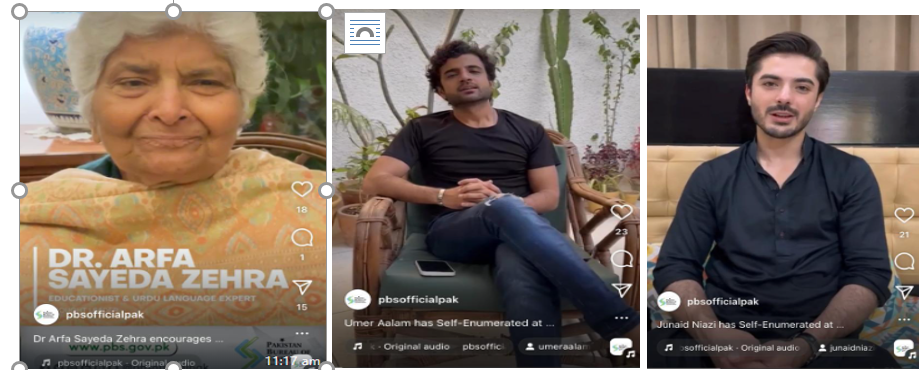



MEDIA ENGAGMENT
Conversations generated around census:
39830 TWITTER; 1914 INSTAGRAM; 5417 FACEBOOK (GROUPS & PAGES); 355 TIKTOK, 3636 ON FORUMS, 305 PODCASTS, 12680 NEWS, 5125 VIDEOS, 2388 BLOGS, 14907 WEB
- 1 Twitter Trend – #DigitalCensusPk
- 1 Twitter Space Discussion
- 3 Explainer Videos, 6 Celebrity Shootouts, 2 Tutorial Videos
- Trending (#2) and Narrative Building, Twitter Space Discussions
- 295 Articles and Blogs Placed out of Which 11 International News Coverage Initiated with the support of Reuters, AP & Al Jazeera
- 200 Instagram Placements through 10 Releases
- 4 Podcasts
- 7 Youtubers, 100+ Tiktoks, 100+ Instagram Content
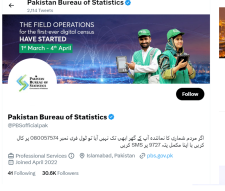

CRISIS COMMUNICATION
CRISIS COMMUNICATION
- Mitigated 15 Trolls
- Generated Counter-Narratives on 4 Themes (MQM, NADRA, Enumerators, Sindh Government)
- Mitigated 4 Account Attacks
- Managed 121 DM Conversations to Mitigate Negative Conversations On Twitter and Facebook


| CONTENT DELIVERED | |
| Deliverables as per contract | Average Targets achieved beyond contract |
| 1634 | |
| 2131 | |
| 1634 | |
| Youtube | 140 |
| 1634 | |
| Snapchat | 1634 |
| Creative static/ moving content | 1634 |
| Videos for social media | 140 |
| Photos | 8820 |
| Content | 1634 |
| Page security | Daily On going |
| Celebrity Endorsement | x5 |
| Video and Photo coverage of Events and Meetings and/ | 79 meetings/ coverage |
| Census Field Operations Commencement Event Activation | 2 |
| Explainer videos | 3 |
| Songs | 2 |
| Total reach | 75,154,158 |
MAINSTREAM MEDIA (TV, RADIO, PRINT)
TV
The Publicity Campaign on Mainstream Media included Paid Advertisements on main NEWS Channels on TV along with unpaid interviews and tickers during prime time and morning shows. The total air time for paid campaign was 9 hours 43 minutes and 50 seconds and unpaid campaign was 2 hours 48 minutes with a viewership of 182.7 Million (all spots added). These Channels were carefully chosen on the basis of National and Regional representation and Target Rating Point (TRP) of particular Channel at that time.
Engagement of Celebrities
The census messages were conveyed through famous celebrities like Bushra Ansari and Javed Sheikh on TV and Radio.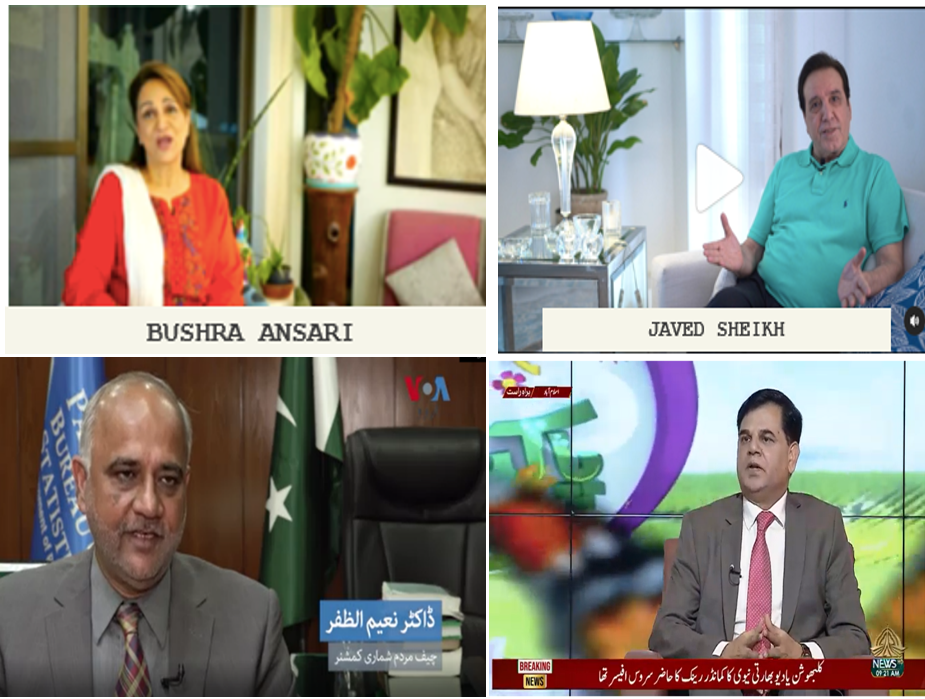

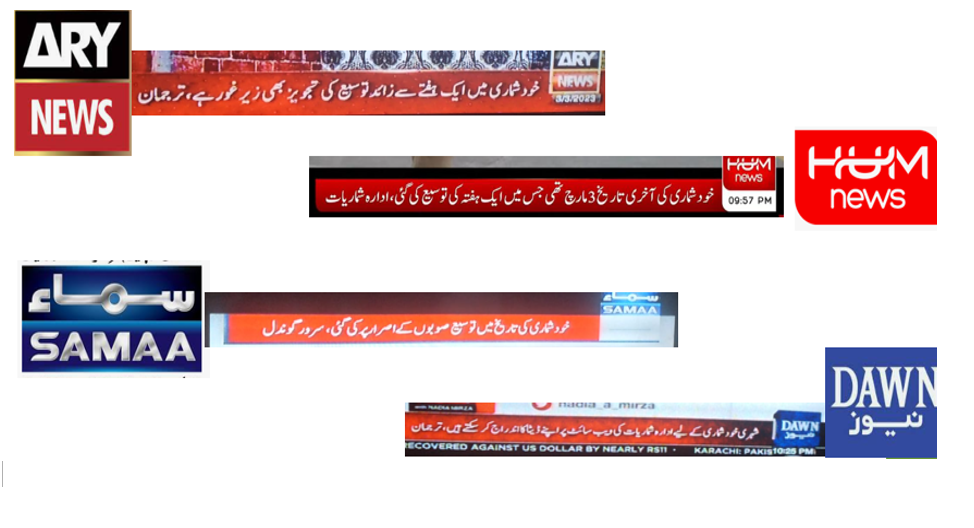

Print
Print Advertisement on different Newspapers that included National (English & Urdu) and Regional Newspapers. To get maximum coverage, the Newspapers were selected on the basis of Audit Bureau of Circulation (ABC) Certification. No of advertisements published throughout the campaign were 21 with total 420 Insertions and readership of 4788K per day. Apart from paid advertisements, more than 45 press releases were sent to papers for publishing throughout the Campaign. These advertisements got coverage in all important newspapers. Interviews of Chief Statistician and official spokespersons were also published in Newspapers.


Radio
Pakistan Super League (PSL) transmission of Radio Pakistan was sponsored by PBS. Apart from Paid Radio spots announcements about participating in Census were also made through all frequencies of Radio Pakistan covering 98% population and 80% area of Pakistan including all major cities. Interviews and podcasts of Chief Statistician and Official Spokesperson were also broadcasted from Radio Pakistan and were repeated on different frequencies. Unpaid campaign consisted of 2 hours’ announcements during PSL matches apart from regular advertisements.
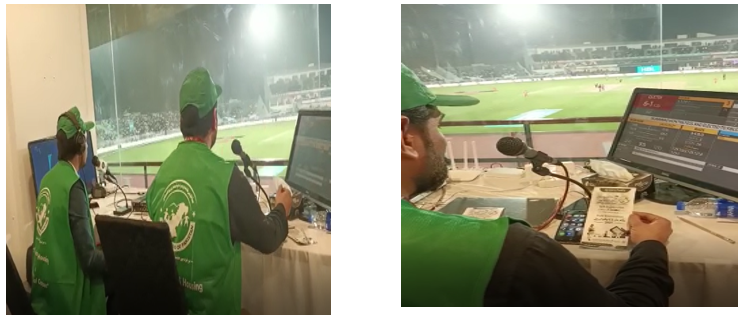

OUTDOOR PUBLICITY CAMPAIGN
An Outdoor publicity campaign is the most effective way to enhance awareness. Therefore, PBS devised a wide-ranging strategy for Outdoor Publicity Campaign of 7th Population and Housing Census. The outdoor campaign consisted of Banners / Streamers display, Leaflet distribution, branding of PBS offices and vehicles and Community awareness programs such as use of IEC material (bags, caps and vests) by enumerators, meetings at grass root levels, Census Walks, participation in IT Expo and announcements etc. The content was carefully designed in a manner that not only communicated the census message to general public but also motivated them to become a part of this important exercise in huge national interest. Details are evident from following table:
Publicity Mode | Details |
| Outdoor Campaign | Display of 616 banners on ‘Gratis basis’ on six main Airports (Islamabad, Karachi, Lahore, Peshawar, Quetta and Faisalabad), toll Plazas, Railway Stations, PSO pumps and main locations in Islamabad and other main cities. Placement of 300 streamers at public places in Islamabad and 500 at each Provincial Headquarter. Distribution of 100,000 leaflets/broachers at Public Places like Toll Plazas, PSL Matches, markets, malls, Educational institutes etc. |
| Community Awareness Programs | Conduct of Census awareness walks at Provincial Headquarters and participation in IT Expo to promote Self Enumeration. |
| Grass Root level | Announcements in Mosques, Jirgas/ Baithaks, approach local influential for Community meetings to resolve issues etc. |
| Vehicle and offices branding | Branding of Different vehicles used by PBS and Census Support Centres. |
ISSUANCE OF COMMEMORATIVE POSTAGE STAMP
A postage stamp was unveiled to mark the historical milestone of First Ever Digital Census of Pakistan on 8th June, 2023. The ceremony was held at Pakistan Bureau of Statistics head office. The stamp was unveiled by Chief Census Commissioner, Dr. Naeem uz Zafar.
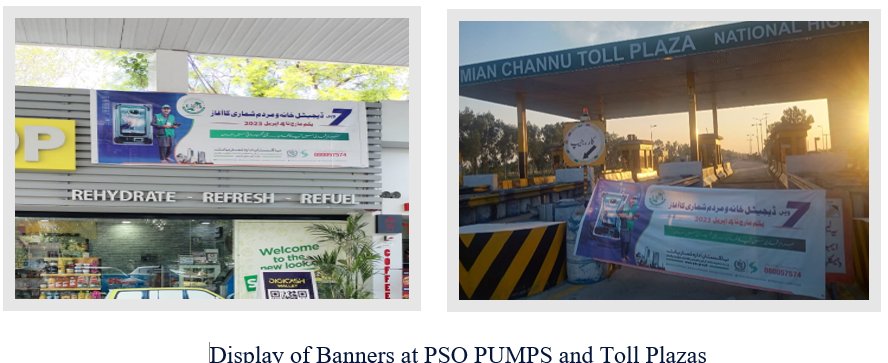



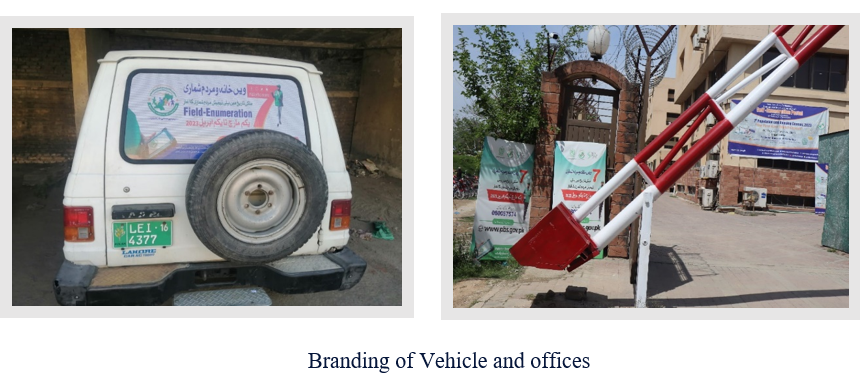

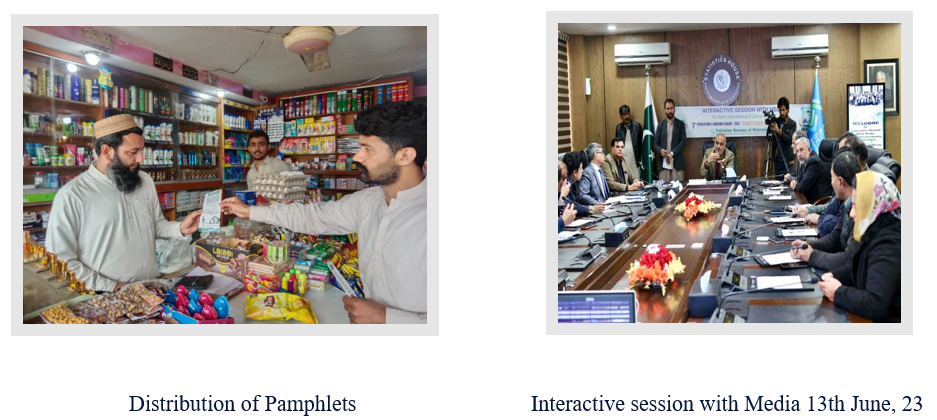

Designing of the IT infrastructure, development of Census ERP, Procurement of 126000 tablets and acquisition of high-resolution imagery (Digital Maps) of the whole country for the “first ever Digital Census” of the world’s fifth biggest country, was a challenging task in shortest period of time which normally takes at least five years for flawless and smooth execution and conduct of census.
Additionally, for provision of data for evidence-based economic policy-formulation, the basic information for conduct of first ever economic census i.e. frame was also dovetailed with the 7th Population & Housing Census, enabling the saving of Rs. 7 Billion of Exchequer due to prudent & visionary planning.
The technological leaps achieved during the census are as follows: –
Indigenous, self-enumeration portal (self.pbos.gov.pk) (first in South Asia, which ensured Public Participation and engagement resulting a trust on the exercise), 6.6 million families of Pakistan visited the portal and showed their confidence on the system.
Automation of the whole census processes and software modules, data transfer models as a Census ERP using best practices like user friendly interface with built-in checks and customized role-based dashboards for efficient management
Offline/ Online features of the design enabled uninterrupted data collection, geotagging, backup for smooth field operations
121,000 IT trained data collectors equipped with hardened tablets with customized operating system linked with dedicated established secured census intranet for seamless data transmission
40 million structures (including all types of economic establishments like factories, shops, banks hostels, schools, colleges, universities, hospitals etc.) geo tagged on indigenous satellite imagery/maps encompassing extensive features, more comprehensive than Google Maps for Pakistan
Seamless data synchronization of almost 5 million individuals on daily basis and over 250 million individuals to data centers in the whole census period.
Dedicated 24/7 Call centers (UAN 080057574) with 150 agents working in three shifts for complaint management and problem resolution managed 2 million in bound and out bound calls along with SMS gateway (9727)
37 working groups constituted on Census Software, Tablets management, census logistics, security call centers etc. for provision of efficient support mechanism for 121,000 field staff
For the first time in history of country, customized role dashboards were provided to the provinces to Assistant Commissioners, Deputy Commissioners and Chief Secretaries which not only provided the live population statistics, but also help to monitor the progress, data collector tracking, live coverage, geotagging, average time for the interview and for identification of the issues for timely reporting & rectification.


